
Malaysia Trains
Train services in malaysia, trains from singapore to malaysia.
There is a shuttle train service connecting Singapore to Malaysia. The journey takes 5 minutes, which is quicker than travelling by road or ferry from Singapore to Malaysia. The arrival point in Malaysia is Johor Bahru Sentral Station from where you can board connecting train services to Kuala Lumpur, the Cameron Highlands and the border with Thailand.
Train Times from Singapore to Malaysia
There are 13 direct train services a day from Woodlands Train Checkpoint in Singapore to Johor Bahru in Malaysia which can book online.
Buy Tickets from Singapore to Malaysia
Use the Search Box below to buy your train tickets from Woodlands Train Checkpoint in Singapore to Johor Bahru in Malaysia.
Singapore Railway Station
Trains to Malaysia depart from Woodlands Train Checkpoint.
Malaysia Railway Station
Trains from Singapore terminate at Johor Bahru Sentral Station.
Travel from Johor Bharu
From Johor Bharu there are two routes you can take for travel to the border with Thailand.
Travel to Thailand via Rantau Panjang
The first route you can take is to follow East Coast railway line (also known as the jungle line) all the way from Johor Bharu to Wakaf Bharu which is the nearest passenger railway station to the town of Kota Bharu.
Cheap local bus services regularly depart from Kota Bharu Central Bus Station to the border crossing with Thailand at Rantau Panjang. The bus journey to Rantau Panjang takes 1 hour 20 minutes and cost 5.10 MYR. Once you cross the border into Thailand its 2 minute journey on motorbike taxi to Sungai Kolok Train Station from where you take trains all the way to Bangkok via Hat Yai, Surat Thani and Hua Hin.

Travel to Thailand via Padang Besar
The other option is to take a train from Johor Bahru to Gemas where you can trains onto Malaysia’s West Coast railway line. The West Coast line runs from Gemas to Padang Besar on the border with Thailand via Kuala Lumpur and Butterworth Railway Station near Penang Island.
From Padang Besar there is a single train per day which departs from Padang Besar at 18:00 Malaysian Time (17:00 Thailand Time) to Bangkok via Hat Yai, Surat Thani and Hua Hin arriving in Bangkok at 09:05 Thailand Time.
How useful was this post?
Click on a star to rate it!
Average rating 4 / 5. Vote count: 49
No votes so far! Be the first to rate this post.
Copyright © 2024 Malaysia Trains

- Thailand Lantern Festival
- Indonesia(Bali)
- South Korea
- China (HK, Taiwan)
- Itinerary Ideas
- Asia Highlights Travel Reviews
- Thailand Travel Reviews
- Vietnam Travel Reviews
- Cambodia Travel Reviews
- Japan Travel Reviews
- Myanmar Travel Reviews
- China Travel Reviews

How to Travel from Singapore to Kuala Lumpur (Malaysia)
The travel distance from Singapore to Kuala Lumpur is only about 350 km (220 miles). There are many ways to travel from Singapore to Kuala Lumpur, the capital city of Malaysia, including plane, intercity bus, train, and private transfer. The most-chosen way (for international travelers) to get to Kuala Lumpur from Singapore is by plane and the cheapest way is by bus.
1. Travel by Plane — the Most-Chosen Way
Flying seems to be the fastest way to get to Kuala Lumpur from Singapore, though if you're staying close to the Malaysia border in Singapore, a car journey may actually be faster. Once getting to/from the airport, check-in, immigration, baggage claim, and waiting time are considered, the total journey may be anything from 4½ to 6½ hours, depending on your start and finish points.
There are plenty of flights each day with a duration of about 1 hour . Flights depart from Singapore Changi Airport and arrive at Kuala Lumpur International Airport. There are many airlines operating them, including JetStar Asia, Singapore Airlines, Air Asia, Scoot, Malindo Air, Malaysia Airlines, Silk Air, and Firefly. You may get a cheap flight ticket for as little as USD$40.
Discover real reviews of Highlights Travel Family 's best-rated service across trusted platforms.
2.Travel by Bus — the Cheapest Way
Travel by bus from Singapore to Kuala Lumpur is a possibly-more-convenient and inexpensive alternative to a flight. It takes about 5–6 hours by bus and it is the most recommended way to travel for the following reasons:
- Best price : one way costs about USD$11–35 per ticket.
- Kuala Lumpur city center arrival (instead of 40 km away at the airport)
- Good travel experience : Buses are equipped with air-conditioning and comfortable adjustable seats, which are wide and comfortable. Some companies also offer TVs in the compartments and wireless Internet access. Luxury bus companies even provide snacks, meals, and drinks on the bus.
- Many choices : There are many bus companies operating a variety of schedules, such as StarMart Express, Transfer Travel, Seasons Express, Sri Maju Group, The One Travel, and Grassland Express.
Price tips:
- There is a price difference depending on the bus's facilities and comfort level.
- Some cheap bus companies will not choose the most efficient route (to pick up more passengers) and will take about one hour more for the trip.
Although each long-distance company has different departure and arrival points, but most of the buses depart from Golden Mile Complex in Singapore and terminate at Terminal Bersepadu Selatan in central Kuala Lumpur.
Procedure for Crossing the Singapore-Malaysia Border
Compared with air travel, the procedure for crossing the border overland is a little different and more complicated. Generally, buses from Singapore to Malaysia go to Singapore's Tuas Checkpoint for exit inspection, and then go to the Malaysian checkpoint in Gelang Patah for entry inspection. When arriving at the border:
- Get off the bus with the necessary documents (passport, visa), but you can leave luggage in the bus.
- Process through Singapore's Tuas Checkpoint for the exit stamp in your passport.
- Get onto the bus again, cross the bridge over the Johor Strait, and after 10–15 minutes you'll reach the Malaysia border control area.
- Get off the bus with all your belongings this time, pass through Malaysian customs and get your entry stamp for Malaysia. You will be screened before entering.
- For a quick crossing, please prepare your exit card in advance.
- Please prepare your entry card and complete it in advance before going through Malaysian Immigration.
- Declare whatever you bring that might cause some problems such as alcohol and cigarettes.
- Please note that it may take about 1 hour for you to cross the border if it is not crowded, but the whole procedure might be delayed and you may have to wait for hours in line if it is crowded.
3. Travel by Train — the Train Travel Lovers Option
Going to Kualu Lumpur by train is another option for train travel lovers, but unfortunately, there is no direct train available between Singapore and KL . If you want to go by train, you have to change train twice! The total cost of the train tickets is from USD$16 for a one-way trip, and it takes about 8–9 hours including the waiting and train changes time.
- Firstly , you can take a train from Singapore Woodlands Train Station to JB Sentral (Johor Bahru Central) in Malaysia, which takes about 5 minutes, USD$4 per ticket
- Then , take train from JB Sentral to Gemas Station, which takes about 4½ hours and is USD$5 per ticket.
- Lastly , take a train from Gemas Station to KL Sentral (Kuala Lumpur Central) which takes about 2½ hours and USD$7 per ticket
- Scan your passport at the gate checkpoint to enter Woodlands Train Station.
- Clear Singapore Immigration.
- Go through Malaysian Customs and Immigration.
- Board the train.
- Please arrive at the train station at least 30 minutes before departure for checking in and passing immigration.
- The platform gate will close 10 minutes before departure.
- There are more than 30 trains per day between Woodlands and Johor Bahru Sentral, but train ticket booking is always tight. Tickets can be booked from about 30 days before departure.
- You can buy tickets at Woodlands CIQ ticket window or book a ticket online at https://www.ktmb.com.my/ . Trains are operated by Malaysia's KTMB train company.
- If you book a ticket online, you have to get a paper ticket printed out at Woodlands CIQ ticket window (using your booking details).
- Trains from Woodlands to Johor Bahru are shuttle trains. Trains from JB to Gemas are normal trains and most of them offer only First Class seats. Trains from Gemas to Kuala Lumpur are high-speed trains with only First Class seats.
4. Travel by Private Car — the Most Convenient Way
Compared with public transportation, and even flights, with the stress of carrying your luggage on and off, waiting for entry/exit checks, etc., a 4-hour private transfer from Singapore to Kuala Lumpur is the most comfortable and convenient way to get there.
It is a door-to-door service , and your private driver will meet you at your hotel lobby or any place in Singapore. It is flexible and you can leave at any time. What is more, it is absolutely hassle-free! When you cross the border, you do not need to get out of the car to clear immigration. Your experienced driver will help you to process through immigration smoothly.
The price of the transfer is from USD$250 per person based on two passengers. Contact us for our hassle-free private transfer service.
5. Travel by Taxi — Vehicle Change Needed
You cannot take a taxi from Singapore to Kuala Lumpur, but it is easy for you to take one to Johor Bahru, the nearest Malaysian city to Singapore . There are three kinds taxies: fixed-point taxis, Johor Bahru non-fixed-point taxis, and Singapore non-fixed-point taxis
- Fixed-point taxis can only carry passengers between Singapore Wanshan Street Taxi Terminal (next to Queen Street Bus Terminal, a 10-minute walk from Bugis MRT Station) and Johor Bahru Larkin Station.
- Johor Bahru non-fixed-point taxis can carry passengers from any place in JB to Singapore Wanshan Street Taxi Terminal.
- Singapore non-fixed-point taxis can carry passengers from anywhere in Singapore to Johor Bahru Larkin Station.
The price is about USD$36 per taxi.
You can clear customs quickly as you do not need to get out of the taxi for immigration clearance.
From Johor Bahru Larkin Station, you could continue your journey to Kuala Lumpur in another taxi or take a bus/train. A taxi would take another 4 hours or so and costs around US$150–200, depending on traffic.
6. Travel by Ferry — the Desaru Beach Option
A ferry service is also available between Singapore and Johor Bahru, Malaysia, which is from Changi Ferry Terminal to Tanjung Belungkor at JB.
People who want to go to the Desaru beach area in Malaysia always choose the ferry trip. However, it is an out-of-the-way option if you want to travel on to KL. A Desaru–KL taxi takes from 4 hours 15 minutes and costs around US$160–220 depending on traffic. You might choose to stay at Desaru before continuing your journey.
After arriving in Tanjung Belungkor, you can take a bus to Desaru. There is only one ferry trip in the morning (10:30) and one in the evening (18:30) during work days, and there are more ferries scheduled for weekends and public holidays. The ferry can carry about 12 passengers a time. It is about a 45-minute ferry trip and the price of a crossing is about USD$20 per person. The ferry is operated by Desaru Fruit Farm Tour and Travel company.
Please prepare your valid passport, visa, and ferry ticket to pass immigration at the ports.
Exploring Singapore with Us
Singapore is a small island country with convenient transportation within the island and also outside to other countries including Malaysia. We are ready to design your perfect trip to Singapore (and Asia), including arranging the transportation. Travel with Asia Highlights for a wonderful, worry-free Singapore trip.
Why Asia Highlights (10,000+ reviews & 98.8% 5-star rating)
- Save Your Time:
- Less research, more enjoyment!
- Real-time 1V1 expert planning
- Maximize Your Flexibility:
- Personal local guide and ride
- Explore at your own pace
- Celebrate Your Journeys:
- Specially-crafted family adventures
- Celebrate milestones with style!
- 18-Day Singapore, Thailand, Cambodia, and Vietnam Tour
- 12-Day Thailand, Singapore, and Bali Tour
- 13-Day Private Singapore and Bali Journey of Discovery
- 19-Day Japan, China, Singapore and Bali
- How to Plan a Trip to Thailand, Singapore and Bali 2024
- How to Plan a Trip to Singapore and Thailand 2024/2025
- How to Plan a Trip to Thailand, Malaysia, and Singapore 2024
- How to Plan a Trip to Singapore and Bali 2024/2025
- The Best Times to Visit Singapore
Get Inspired with Some Popular Itineraries
At Asia Highlights, we create your kind of journey — your dates, your destinations, at your pace. You can have any trip tailor made for your travel.
More Travel Ideas and Inspiration
Sign up to our newsletter.
Be the first to receive exciting updates, exclusive promotions, and valuable travel tips from our team of experts.
Why Asia Highlights
Where can we take you today.
- Middle East
- African Safari
- Travel Agents
- Loyalty Program
- Privacy Policy
Address: Building 6, Chuangyi Business Park, 70 Qilidian Road, Guilin, Guangxi, 541004, China
- Attractions & Tours
- Flight + Hotel New
- Car Rentals
- Airport Transfers
- Destinations
- Trip.com Rewards
Train to KL from Singapore [Official Guide]

May 30, 2024

Are you planning a trip to Kuala Lumpur (KL) from Singapore? Why not take the train? Train travel is a great way to see the sights and enjoy the journey. Not only is it affordable, but it's also a scenic journey that takes you through some of Malaysia's most beautiful landscapes.
In this article, we'll break down the journey from Singapore to Kuala Lumpur and give you all the information you need to plan your trip.
Recommended for Trip to Malaysia

Kuala Lumpur Half Day City Tour
Visit the National Mosque, the King's Palace, the National Museum and more

Buy Cheap eSIM for Malaysia
from S$2.60 per day only! Choose the amount of data you want.
Train to KL from Singapore overview
The train journey from Singapore to Kuala Lumpur involves a three-part journey, with the first leg from Singapore to Johor Bahru (JB), the second leg from Johor Bahru to Gemas and the final leg is from Gemas to Kuala Lumpur (KL).
Here we are going to go into more details on the 3 separate parts.
Train to KL from Singapore part 1: Singapore to Johor Bahru
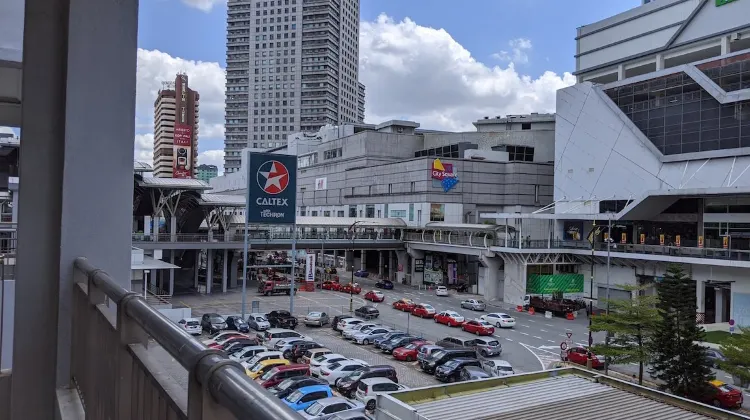
The first part of the journey takes you from Singapore to Johor Bahru. You can take a taxi or MRT service to get to Woodlands Train Checkpoint in Singapore.
From there, you'll clear Singapore Immigration and Malaysian Customs and Immigration before boarding the shuttle train via KTM that goes from Woodlands Train Checkpoint to JB Sentral.
This ride will only take 5 minutes.
Train to KL from Singapore part 2: Johor Bahru To Gemas

Source: Wikipedia - Gemas train station ticket counters
The second part of the journey takes you from Johor Bahru to Gemas.
Once you arrive at JB Sentral, you'll be required to get on the KTM Berhad train to Gemas in the Tampin District of Negeri Sembilan. Travel time will take approximately 4 hours for this ride.
Train to KL from Singapore part 3: Gemas To Kuala Lumpur
The final part of the journey takes you from Gemas to Kuala Lumpur.
Once you arrive at Gemas, you’ll need to change trains at Gemas to KL Sentral. The travel time from Gemas to KL Sentral will take approximately 2 hours and 30 minutes.
Train to JB from KL schedule
The first train departs from JB Sentral at 8:30 AM and arrives at Gemas at 13:14 PM. The last train departs from JB Sentral at 18:05 PM and arrives at Gemasl at 22:47 PM.

Souce: ktmb.com.my
There are only 2 trains from the point of writing this article from Gemas to KL Sentral.
- The first train departs from Gemas at 8:05 AM and arrives at KL Sentral at 10:45AM.
- The second (and last) train departs from Gemas at 15:20 PM and arrives at KL Sentral at 18:00 PM.

If you want to arrive at KL on the same day, the only option is to take the 1st train from JB to Gemas and have about a 2-hour transit before taking the second train from Gemas to KL Sentral.
Buying train ticket to KL from Singapore

There are 2 ways you can buy train tickets: either online via the KTMB app, or over the counter at the respective train stations. We definitely recommend buying return tickets on the KTMB app as early as you can, as tickets sell out ridiculously fast!
To book a train ticket online, follow these steps:
- Download the KTMB app.
- Create an account or log in to your existing account.
- Select your departure and arrival stations and the date of travel.
- Choose your preferred train and seat.
- Pay for your ticket using your preferred payment method.
- Download and print your ticket or save it on your mobile device.
Immigration and customs clearance
As the train from Singapore to JB crosses the border between Singapore and Malaysia, passengers need to go through immigration and customs clearance. Here's what you need to know:
Singapore immigration and customs clearance

Direction to Woodlands Train Checkpoint
At the Woodlands Train Checkpoint station, passengers need to clear Singapore immigration by presenting their passport and disembarking the train. After clearance, passengers can board the train again and continue their journey.
Malaysia immigration and customs clearance
At the Johor Bahru Sentral Station, passengers need to clear Malaysia immigration and customs. Passengers need to disembark the train, go through immigration clearance, collect their luggage, and clear customs. After clearance, passengers can board the train again and continue their journey.
Make sure to carry all the necessary documents, such as passport, visa, and travel itinerary, to avoid any hassle during immigration and customs clearance.
Tips for taking train to KL from Singapore

Book your tickets in advance
To avoid disappointment, it's best to book your KTM train tickets in advance. Same-day tickets are almost always sold out, especially on weekends and public holidays.
Check the train schedule
Make sure you check the train schedule before heading to the train station. This is especially important as there is no direct train to KL from Singapore. You are required to do 2 transits.
Bring your passport
Your passport is required for clearance at both Malaysian and Singaporean immigration. Make sure you bring it with you when taking the KTM train to JB from Singapore.
Arrive at the train station at least 40 minutes before your train departs to give yourself enough time to clear immigration and board the train.
Train to KL from Singapore conclusion
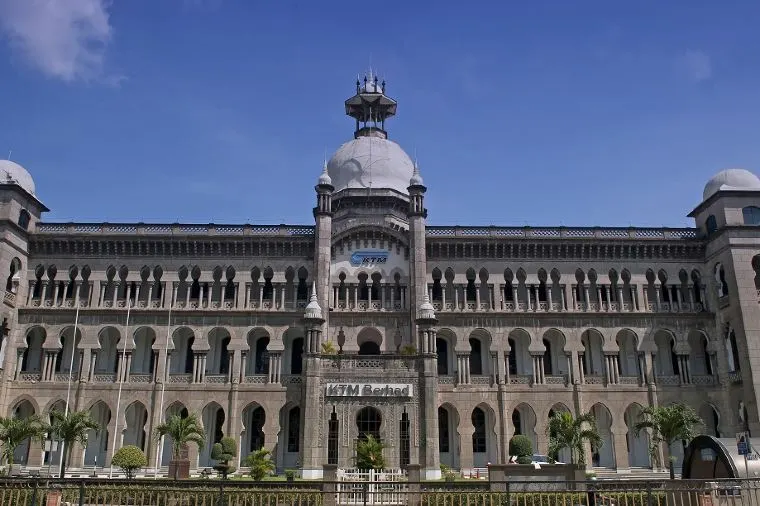
Embarking on a journey from Singapore to Kuala Lumpur by train offers not only an affordable and convenient travel option but also a captivating experience through Malaysia's picturesque landscapes.
The three-part voyage takes you from the bustling cityscape of Singapore to the charming allure of Johor Bahru, from there to the heart of Gemas, and finally, to the vibrant Kuala Lumpur.
Beyond the travel logistics, this train journey serves as a bridge between cultures and nations, with customs clearances adding a touch of adventure. As you explore the scenic route, remember to keep an eye out for the ever-changing travel landscape, as regulations and experiences evolve over time.
😉 Interested to find out more about Malaysia? Read on:
Faqs: train to kl from singapore, how can i buy train tickets for the singapore to kl journey, what are the travel durations for each leg of the journey, are there specific immigration and customs procedures to follow, do i need a visa to travel from singapore to malaysia, what are the current covid-19 travel restrictions.
Train To KL From Singapore
- 1. Train to KL from Singapore overview
- 2. Train to KL from Singapore part 1: Singapore to Johor Bahru
- 3. Train to KL from Singapore part 2: Johor Bahru To Gemas
- 4. Train to KL from Singapore part 3: Gemas To Kuala Lumpur
- 5. Train to JB from KL schedule
- 6. Buying train ticket to KL from Singapore
- 7. Immigration and customs clearance
- 8. Tips for taking train to KL from Singapore
- 9. Train to KL from Singapore conclusion
<h3>Find Cheap Deals & Discover Destinations</h3>
Getting Around
- ez link card
- ferry to bintan
- train from singapore to jb
- Japan Car Rental
- Narita Express
- sentosa express
- travel to thailand from singapore
- travel apps for south korea
- Tokyo to Osaka Shinkansen
- Narita Airport to Tokyo
- renting a car in singapore
- egate malaysia
- mdac malaysia
- Travel to Batam from Singapore
- Narita Airport Limousine Bus
Popular Attractions
- legoland Malaysia
- madame tussauds singapore
- artscience museum
- mustafa centre
- tayo station
- sentosa 4d adventureland
Connectivity
- Bali SIM Card
- australia esim
- esim indonesia
- south korea esim
- europe esim
- Switzerland eSIM
- Customer Support
- Service Guarantee
- More Service Info
- Website Feedback
- About Trip.com
- Terms & Conditions
- Privacy Policy
- About Trip.com Group
Other Services
- Investor Relations
- List My Hotel
- Become a Supplier

The Man in Seat 61
Singapore to Bangkok by
Eastern & oriental express.
- Buy train tickets
- Buy ferry tickets
- Book a hotel
- Privacy & cookies
- Home
Train travel UK & Ireland...
Train travel in europe..., train travel in asia..., train travel in africa..., train travel in america..., train travel in australasia, e&o train times, fares & tickets.
The Eastern & Oriental Express (E&O) is a luxury train operating in Singapore, Malaysia & Thailand, run by the same people who operate the legendary Venice Simplon-Orient-Express to similar 5 star standards.
Where does the E&O go?
It normally runs Singapore to Bangkok once or twice each month from March to December. Journey 2 nights, 3 days. Includes a brief tour of Kuala Kangsar and a visit to the Bridge on the River Kwai.
It normally runs Bangkok to Singapore once or twice each month, February to December. Journey 3 nights, 4 days. Includes a visit to the Bridge on the River Kwai and a brief tour of Kuala Kangsar.
However , in 2024 it's only running within Malaysia and will not enter Thailand.
Prices start at around $3,100 per person for two people sharing or $5,440 for solo travellers, including private sleeper, tours and meals but excluding drinks.
The train normally also runs occasional rail cruises for 3 or 6 nights, including Bangkok-Vientiane (Tales of Laos), Bangkok-Chiang Mai, and longer, more extensive Singapore-Bangkok itineraries.
The Eastern & Oriental Express is the luxury option. For scheduled trains linking Singapore, KL, Penang & Bangkok, see the Malaysia page .
Departure dates
Northbound from Singapore to Bangkok (3 days, 2 nights):
2022 : The E&O was suspended since 2020 due to the pandemic.
2023: The E&O remained suspended.
2024: The E&O resumes operation in February 2024, but will only run tours within Malaysia, not Thailand.
Southbound from Bangkok to Singapore (4 days, 3 nights):
Northbound timetable (when running to Bangkok in normal years): Singapore Woodlands Checkpoint depart 15:00 day 1, Kuala Lumpur historic station 23:55, Kuala Kangsar 08:00-10:15 day 2, River Kwai Bridge arrive 10:45 day 3, Kanchanaburi depart 12:00 day 3, Bangkok arrive 16:15 on day 3.
Southbound timetable (when running from Bangkok in normal years): : Bangkok depart 17:50 on day 1, River Kwae Bridge arrive 08:30 day 2, Kanchanaburi depart 11:00 day 2, Kuala Kangsar 13:45-16:20 day 3, Kuala Lumpur 22:30-00:15 day 3/4, Singapore Woodlands Checkpoint arrive 10:30 on day 4.
How much does it cost?
Singapore to Bangkok (or vice versa) by Eastern & Oriental Express starts at around $3,325 per person in a Pullman or $4,825 in a Stateroom or $7,575 in a Presidential suite, assuming two people travel together and share.
For solo travellers, fares start at around $5,140 with sole occupancy of a Pullman compartment.
How to buy tickets
Call Railbookers: Train travel specialists Railbookers offer good rates for the E&O and can also arrange hotels, transfer & flights to create a custom tour.
UK call 0207 864 4600, www.railbookers.co.uk .
us call free 1-888-829-4775, www.railbookers.com ., canada call free 1-855-882-2910, www.railbookers.com ., australia call toll-free 1300 971 526, www.railbookers.com.au . , new zealand call toll-free 0800 000 554 or see website ..
You can also check dates, prices & availability & buy tickets at www.belmond.com/eastern-and-oriental-express . However, it's best to call Railbookers first, as Railbookers can sometimes offer train plus a hotel more cheaply than buying train-only from Belmond.
Luggage limit is 30 Kg per passenger (no limit for passengers in the Presidential suites).
Back to top
On board the Eastern & Oriental Express
Fully air-conditioned with all the facilities of a luxury 5 star hotel, the Eastern & Oriental Express was created in 1992 by Orient Express Trains, the same people who have run the superb Venice Simplon Orient Express since 1982. The train uses Japanese-built coaches which were originally used for the short-lived Silver Star sleeper service from Auckland to Wellington in New Zealand (1972-1979). The cars have been totally rebuilt internally for the modern cruise train market, to luxury standards with en suites to every compartment. You'll find both the train itself and its staff truly excellent. The Eastern & Oriental Express is all non-smoking, although smokers can smoke in the open-air observation car at the rear of the train.
Which type of sleeper to choose ?
All passengers sleep in a private en-suite sleeper compartment - incidentally, cabin is something they have on ships, the correct term for a room on a train is compartment . All the sleeping-cars have a narrow corridor along one side with the rooms opening off it. The Eastern & Oriental Express has three types of compartment:
The Man in Seat 61 says : "The room is comfortable but compact, pretty much like a luxury version of regular railway sleeper compartment, in fact. These photos give a good idea of the full size of the compartment, so if you'd like more space (or want to avoid climbing a ladder to an upper bunk) it may be worth the extra for a Stateroom."
Option 2: Staterooms. A Stateroom gives you double the floorspace of a Pullman, with a sofa, armchair and freestanding chair by day. While you are at dinner, the steward converts your compartment to two lower beds (so no ladder required!). As in a Pullman, there's a small en suite washroom with toilet, washbasin & shower, and UK-style sockets allow you to recharge your camera, phone or laptop. Click the images for larger photos .
The Man in Seat 61 says "You'll appreciate the extra room if you upgrade to a Stateroom. It's a really nice layout - One of you can lounge on the sofa during the day, or you can each have a seat next to the double windows, which are better for watching the scenery, too, compared to the single window in a Pullman."
Option 3: Presidential Suite. This is the E&O's best accommodation. There are just two Presidential Suites on the train. Sofa, chairs and table during the day, it converts to two lower beds by night, in a similar arrangement to the Stateroom shown above. There's a small en suite washroom with toilet, washbasin & shower.
The Man in Seat 61 says : "The Presidential suites are slightly bigger than a Stateroom, and the en suite is fractionally bigger too. But personally, I think I actually prefer the cosier but still relatively spacious Staterooms, with their sofa & armchair arrangement!"
Food & dining on board the E&O
The Eastern & Oriental Express owns three dining-cars, of which two will be attached to any given departure. There are usually two sittings for lunch and dinner, at 12:00 or 14:00 for lunch and 18:00 or 21:00 for dinner, although times vary. You can choose your sitting at the beginning of the journey, or make a request when you book. Food is included in the fare, although drinks are extra, expect a bottle of wine to start at about US$40. The currency used on board is US dollars, although credit cards are accepted. One of the nice things is that they give you a different table reservation for each meal, so you share a table with different people each time. It's a very sociable experience! You may also get to eat in both of the dining-cars, each with its own decor.
Breakfast & afternoon tea
Bars, lounges & the e&o's observation car.
Apart from the two kitchen-dining cars, the Eastern & Oriental Express has an observation-lounge car at the rear of the train, and in the centre a piano-bar car and a saloon car. Whilst an after-lunch nap and afternoon tea in your compartment can be nice, you'll spend most of your day in one of these sociable cars.
The observation car. This is the Eastern & Oriental's signature car. It features an open-air observation deck at the rear of the train where you can look back along the tracks, excellent for watching and photographing the scenery. A steward will keep you supplied with coffee, although this being Southeast Asia it's not exactly cold outside! Smokers can indulge here, although few do so it's not a problem if you're an ardent non-smoker. On a Singapore-Bangkok or Bangkok-Singapore journey, the train reverses at Butterworth and the observation car is turned round and moved to the other end of the train. The open-air deck gets busy at times as you can see in the photo, but you'll always find a place when you want one.
Saloon car with reading room & boutique : The Saloon car features a small private dining area (above left), a small gift shop selling Eastern & Oriental Express souvenirs, and a narrow reading room with small library (above right). The tables are used as an overflow diner, but also for small groups who want private dining.
A journey from Singapore to Bangkok on the Eastern & Oriental Express
Onward connections from bangkok.
Many people buy a trip on the Eastern & Oriental Express from Singapore to Bangkok as part of a longer tour around Southeast Asia. Rather than fly, stay on the ground! Here is some useful information on onward connections from Bangkok by regular scheduled daily trains:
Watch the video : Bangkok to Singapore by Eastern & Oriental Express
Hotels in singapore & bangkok.
You might also want to check Tripadvisor: Tripadvisor Singapore hotels Tripadvisor Malaysia hotels
Raffles Hotel, Singapore Check prices & book
Easily the best place to stay before or after your trip on the Eastern & Oriental Express. Book a room at Raffles online .
Eastern & Oriental Hotel, Georgetown, Penang Check prices & book
If you like Raffles, try another of the Sarkies brothers' hotels, the historic Eastern & Oriental Hotel in Georgetown, Penang (no direct connection with the E&O train, as far as I know), equally historic but a bit cheaper at around £150 for a double room. It's grand, well-located with gardens to the rear backing the sea.
Mandarin Oriental Hotel, Bangkok Check prices & book
Known by locals (and taxi drivers) as plain 'Oriental Hotel', this is Bangkok's oldest and grandest hotel, located on the banks of the Chao Phraya River. Outdoor restaurant tables sit alongside the river, and they do a great evening buffet. Most of the rooms are now housed in two huge modern tower blocks, but hidden behind palm trees in the courtyard is the diminutive original block, today restored to within an inch of its life and housing just a few of the more expensive suites.
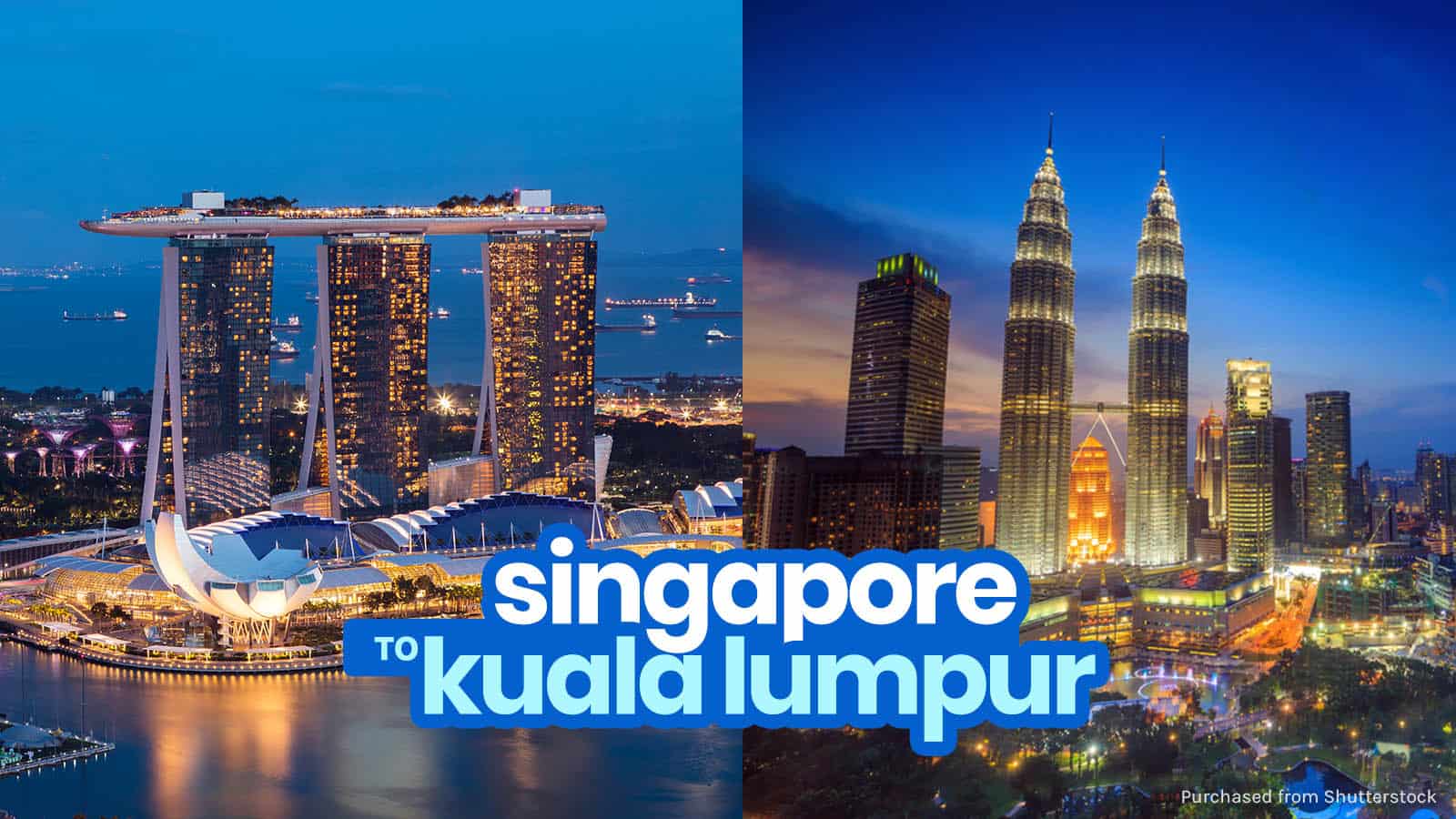
SINGAPORE TO KUALA LUMPUR by BUS or TRAIN: Crossing the Border

Aside from being a popular tourist destination, Singapore is also a favorite stopover for those who seek to explore other places in the region. One of the most usual routes is Singapore – Kuala Lumpur (Malaysia).
Singapore and Kuala Lumpur are over 350 kilometers apart, which is a considerable distance. Yet, many backpackers do this route and skip many destinations in between because of the plenty of available direct transportation options.
The truth is, the plane is the quickest and easiest way to travel between these two great cities. It will only take about an hour from Changi Airport to Kuala Lumpur International Airport. This can also be an expensive option if you cannot score a cheaper airfare. If you are pressed for time and on a budget, you may check the budget carriers for promo/cheap fares.
But for those who have the luxury of time, traveling by land is something to consider. It takes around 6 hours. Here’s how to get from Singapore to Kuala Lumpur by bus and by train.
WHAT'S COVERED IN THIS GUIDE?
1. Purchase your ticket.
You can either buy from your chosen bus company ticketing office or book online through their website. You can also book via 12go here: SINGAPORE-KUALA LUMPUR BUS!
The fare is between SGD 28 and SGD 80, depending on the bus company and class. There are regular and luxury buses.
When you book online, take a screenshot or print the confirmation.
Below are some of the bus companies plying the Singapore – Kuala Lumpur route:
- KKKL Express Singapore
- Starmart Express
- Qistna Express
- Golden Coach Express
- Yakin Pacific Express
- Grassland Singapore
- Lapan Lapan Travel
- The One Travel & Tours
- Five Star Express
- Sri Maju Group
- Causeway Link Express
2. Go to the designated pick up point.
The pickup point varies depending on the bus company. Booking companies will inform you the bus stop where you can catch the bus. But the usual bus stop/pick up point is one of the following:
- Queen Street
- Golden Mile Tower
- Park Royal Hotel
- Concorde Hotel (Orchard Road)
- Bugis MRT Exit D
- Kovan Hub 206
Reminder! Be there at least thirty minutes before the scheduled departure time so you have time to fix things in case something untoward happens. In our case, although it’s for another route, when we booked with Easybook, our names were not included in the driver’s copy of the passenger list, so the bus left without us, even if we were actually early.
3. Go through Immigration check at the border.
Less than 30 minutes into your journey, you will reach the Singapore-Malaysia border. Do NOT forget to bring your passport with you and have it ready. That also means you shouldn’t sleep immediately after boarding.
When you reach the Immigration checkpoint, you need to get off the bus and go through the immigration process. Take all your belongings with you. Remember how the bus and the driver look. Take note of the plate number so you can easily find it on the other side later.
- From Woodlands Checkpoint (Singapore), get on the bus to Johor Customs (Malaysia).
- You will have to get off the bus again to get your passport stamped.
- Find your bus and wait for the other passengers to be cleared.
The process can take about an hour but it depends on the volume of passengers. But try to be as quick as you can to avoid inconveniencing other passengers who might be waiting.
4. Get off at your designated stop.
KL Sentral, Kuala Lumpur’s Central Station, is the most usual final stop of these buses, but not always. Some terminate at TBS Kuala Lumpur (Terminal Bersepadu Selatan) or other stops. Research the stop closest to your hotel.
From here, you can make your way to your hotel. The taxi is the most convenient choice. You’ll find lots of them waiting outside KL Sentral.
Taking the train takes the longest time and involves multiple transfers.
- Purchase a train ticket. You can book in advance at the KTMB website .
- Make your way to WOODLANDS TRAIN CHECKPOINT. Note that this is different from MRT Woodlands Station, which is located a bit far from the Woodlands Train Checkpoint. If you didn’t purchase a ticket in advance, you’ll find the ticketing office in the ground floor.
- Go through Immigration and customs checks. Take all your belongings with you.
- Take the KTM train (Tebrau Shuttle train) to JB (Johor Baru) Sentral Station. The fare is S$5 and travel time takes about five minutes.
- From JB Sentral Station, take the train to Gemas Station. There are three trains that can take you to Gemas, but only the morning train will allow you to reach Kuala Lumpur within the same day because there is only one train that runs from Gemas directly to KL Sentral. That morning train is set to arrive in Gemas in the afternoon, just in time to catch the only train to KL Sentral. Travel time from JB Sentral to Gemas is almost 5 hours. Fare: MYR 21.
- At Gemas, transfer to another train bound for KL Sentral. Travel time: about 2.5 hours. Fare: MYR 31.
- At KL Sentral, make your way to your hotel. You can access the metro and the cabs from here.
We can’t indicate in this post the specific departure and arrival times of these trains because they keep on changing. But you can check the updated schedule on this site: KTMB TRAIN TIMETABLES .
WHERE TO STAY IN KUALA LUMPUR
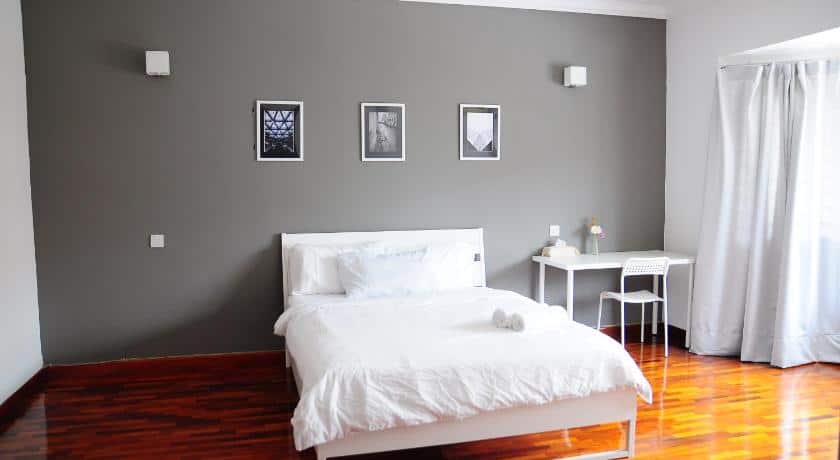
- The Bed KLCC. Check Rates & Availability! ✅
- Paper Plane Hostel. Check Rates & Availability! ✅
- GRAYHAUS Guest House. Check Rates & Availability! ✅
- A&R Boutique Hotel. Check Rates & Availability! ✅
- THE ROBERTSON BY JOSEPH’S SUITES. Check Rates & Availability! ✅
- Acappella KLCC Suites. Check Rates & Availability! ✅
Search for more Kuala Lumpur Hotels!
2️⃣0️⃣1️⃣9️⃣ • 6️⃣ • 1️⃣6️⃣
More Tips on YouTube ⬇️⬇️⬇️
Is this post helpful to you?

Related Posts:
- Sample SOUTHEAST ASIA Itineraries: 5, 6, 7 Days
- Airphil Express’ Fly and Sail AdvenTour Package (Rates and Itinerary) | Singapore – Kuala Lumpur Cruise
- KL TOWER and 1 Malaysia Cultural Village: Kuala Lumpur, Malaysia
- PETRONAS TWIN TOWERS and Suria KLCC: Kuala Lumpur, Malaysia
- SINGAPORE TO MALACCA by BUS or TRAIN: Crossing the Border
- Sights and Sounds of Kuala Lumpur, Malaysia
- Batu Caves: All Things Tall in Kuala Lumpur, Malaysia
- Peninsular Malaysia: Sample 1-Week Itinerary

- Recent Posts
- 2024 STILTS CALATAGAN Beach Resort Travel Guide with Itinerary & Budget - 7 April 2024
- TOKYO SKYTREE TRAVEL GUIDE: Know Before You Visit! - 30 March 2024
- 37 BORACAY TOURIST SPOTS & Things to Do (with Prices!) - 6 November 2023
Make sure that you don’t cross into Malaysia using the Johor immigration the day before a public holiday weekend (e.g. Chinese NY). If you do you will be faced with a 3 hour wait with 1000s of irate travellers in the Malaysian inbound immigration Hall. If you are forced to travel on the day before a malaysian public holiday(especially afternoon) use the train where the Malaysian immigration facilities are at woodlands Station. Yes it’s quite difficult to get to woodlands Station. But it will avoid the huge stress of the jostling at the johor immigration hall.
What is the best time to go to Kuala Lumpur?
Very insightful! Thanks for sharing, Ian!
Hindi po ba super strict ang immigration sa KL and SG? From SG pupunta kami ng KL. 1st time traveler kasi yung kasama ko. Thanks ^__^
Hi LJ, sa case namin, di naman ganun ka-strict. Sa akin, walang questions. Sa mga kasama ko, may konting questions. Depende lang din kasi yan sa Immigration Officer. Make sure lang na meron kang return or onward ticket and proof of accommodations, in case hanapin.
Hi! Quick question, If we are to take the Bus option ,crossing SG-KL. At Malaysian Immig, do they require an embarkation card ? If yes, Is it handed out on the SG bus that were boarding or are we to gather the immig card on the MY immigration?. First time doing the border crossing VIA Bus.
Please help, Thank You!
Featured On

We heard you!
Your comment is now queued for moderation! We’ll try to get back to you soonest. While waiting, follow us on these channels.
Subscribe on Youtube! Follow us on Instagram!

- train tickets
Singapore to Kuala Lumpur by train
Travel from Singapore (Singapore) to Kuala Lumpur (Malaysia) by train (316km): schedule and information to the train connection. Compare fares and buy your ticket.
Singapore - Kuala Lumpur @ 2024-07-08
To travel by train from Singapore in Singapore to Kuala Lumpur in Malaysia, please read the following information.
Your travel route could be like that.
1 Singapore (Singapore) - Johor Bahru (Malaysia) - Kuala Lumpur (Malaysia)

The following links could be interesting for you.
train connections : popular connections travelled by other users
The route consist of more than one step. You have to buy several train tickets.
1a Travelling from Singapore (Singapore) to Johor Bahru (Malaysia)
To travel from Singapore in direction of Malaysia by train, you have to use first the Singapore Metro and then a bus to cross the border. Start from a "MRT Singapore Metro" station in the city center to "Woodlands MRT" station. Journey time about 45 minutes. Exit at "Woodlands MRT" station and change to the bus 950 from "Woodlands MRT" station to "JB Sentral" (the station of "Johor Bahru", Malaysia). This bus cross the border (border control) and its journey time is about 45 minutes. At "JB Sentral" you enter the trains to travel on in Malaysia (Gemas, Kuala Lumpur, Butterworth, Padang Besar, Thailand ...). Metro and bus run in frequent, short intervals. Total costs are less than EUR 10.
Where to buy a ticket from Singapore to Johor Bahru?
Our recommendation! Buy your train ticket or bus ticket at 12go. Compare ticket prices from different companies on this travel connection.

Buy the train ticket at a railway station. Note: in some countries you have to pay a service fee at the ticket counter. The ticket can be purchased at a station in the country of departure, also sometimes in other countries.
train connections: popular connections travelled by other users Johor Bahru - Singapore
1b Travelling from Johor Bahru (Malaysia) to Kuala Lumpur (Malaysia)
To travel in Malaysia by train, please buy your train tickets via the following booking links or at a railway station. Beside the main lines served by trains there are frequent bus connections to every part in Malaysia. Find schedules and ticket prices via the given links.
Where to buy a ticket from Johor Bahru to Kuala Lumpur?
train connections: popular connections travelled by other users Kuala Lumpur - Johor Bahru / Kuala Lumpur - Butterworth, Penang / Kuala Lumpur - Johor Bahru / Kuala Lumpur - Padang Besar
Need a cheap place to sleep? We recommend booking.com
Find a cheap flight compare prices on kiwi.com.

Do you have questions about the connection between Singapore and Kuala Lumpur? Does something not work as it should? Just ask in our forum and get competent answers from our rail travel experts.
Train Routes
- Bosnia-Herzegovina
- Czech Republic
- Netherlands
- Switzerland
- United Kingdom
about railcc : We are real travellers and offer honest and well-grounded tips and tricks for your train journey.
Train tickets
- search train route
- night train
- train company
Rail passes
- Britrail Pass
- German Rail Pass
- Swiss Travel Pass
- Renfe Spain Pass
- Balkan Flexi Pass
Travel guide
- travel tours
- train types
- train travel in ...
- ferry connections
- bus tickets
- Interrail Global Pass
- Interrail One Country Pass
- first time Interrail
- how to Interrail
- Interrail train reservations
- Interrail night trains
- Interrail ferries
- Interrail buses
- Interrail country overview
- Interrail offers and discounts
- Eurail Global Pass
- Eurail Select Pass
- Eurail ONE Country Pass
- how to Eurail
- first time Eurail
- Eurail train reservations
- Eurail night trains
- Eurail ferries
- Eurail buses
- Eurail in ...
- Eurail offers and discounts
- about railcc
We speak more than 30 languages
rail.cc is partner and friend of


Traveloka Team
09 May 2024 - 6 min read
Complete Guide: Train from Singapore to Kuala Lumpur
Take rail travel from Singapore to Kuala Lumpur (or vice versa) if you're searching for a convenient, economical, and eco-friendly mode of transportation! However, it's more difficult than you might imagine to take a train from Singapore to Malaysia. To get where you're going, you may need to take up to three separate trains in addition to the Singapore Metro.
Though it's not the most practical mode of transportation, it's nevertheless a good opportunity to see more of Malaysia's rural areas. Embarking on a train journey from the futuristic cityscape of Singapore to the bustling heart of Malaysia, Kuala Lumpur, offers travelers a unique opportunity to witness the transforming landscapes of Southeast Asia. Traveloka will take you over every step required to take a train from Singapore to Kuala Lumpur in this blog post. The complete trip involves 3 steps:
The first thing to remember is that you get to pick the day and time of your trip when you purchase a ticket. You can use your ticket only on that specific date and time; there is no flexibility. This implies that you will need to purchase a new ticket if you miss your train, which is frequently not doable on the same day.
Please be aware that you must purchase your ticket several weeks in advance of the actual departure date if you wish to go from Singapore to Malaysia or the other way around. The trains fill up fast, especially on weekends! Since it's the quickest method to cross the border between Singapore and Malaysia, many locals use it.
Understanding the Journey - Steps, Tickets, and Duration

Shutterstock.com
Traveling from Singapore to Kuala Lumpur by train is a scenic and efficient way to cross the border between these two dynamic cities. While the direct train service that used to connect Singapore with Kuala Lumpur is no longer in operation, the journey is still possible with a simple change of trains in Johor Bahru, the Malaysian border city.
Step 1: Singapore to Johor Bahru (JB Sentral)
Your adventure begins at the Woodlands Train Checkpoint (WTCP) in Singapore. Before you board the train, make sure to arrive early for immigration clearance. Here you will have to pass through immigration in both Singapore and Malaysia before taking the KTM shuttle train that goes from Woodlands to JB Sentral.
Tickets for the shuttle train, known as the Shuttle Tebrau, operated by Keretapi Tanah Melayu Berhad (KTMB), Malaysia's national railway company, can be purchased online through the KTMB website or at the ticket counter. It's advisable to book your tickets in advance, especially on weekends and public holidays, as the shuttle is quite popular.
The Shuttle Tebrau takes you on a 5-minute ride across the causeway to Johor Bahru Sentral (JB Sentral), the main railway station in Johor Bahru. Despite the brevity of this leg, it's a critical step in crossing the border between Singapore and Malaysia.
Step 2: Johor Bahru to Gemas
Upon arriving at JB Sentral, you will need to transfer to a long-distance train to continue your journey to Gemas (Tampin District of Negeri Sembilan). The travel time from JB Sentral to Gemas takes around 4 hours (excluding the waiting time)
For the longer stretch of your journey, you have a couple of options: the Electric Train Service (ETS) or the KTM Intercity. The ETS is a faster option, with a journey time of approximately 4 hours while The KTM Intercity is a bit slower but offers a more leisurely travel experience.
Tickets for both services can be booked online through the KTMB website or purchased at the JB Sentral station. Again, advance booking is recommended to secure your preferred travel times.
Step 3: Gemas to Kuala Lumpur (KL Sentral)
Finally, you reach the last step of this train journey, which will take you from Gemas to Kuala Lumpur. You have to change the train from Gemas to KL Sentral after your arrival. This journey will take around 2 to 3 hours, depending on the train option and waiting time.
This leg of the trip offers beautiful views of the Malaysian countryside, including palm plantations, rural villages, and rolling hills. The trains are comfortable and equipped with air conditioning, restrooms, and onboard food and beverage services.
Upon reaching KL Sentral, you'll find yourself in the modern heart of Kuala Lumpur. The station is well-connected to the rest of the city through various modes of public transportation, including the Light Rail Transit (LRT), monorail, and buses.
How long is the train from Singapore to Kuala Lumpur? The total distance from Singapore to Kuala Lumpur is approximately 350 kilometers. The journey by train, including the transfer time, can take anywhere from 6 to 10 hours, depending on the connection times and the type of train you choose.
Train Tickets
How to book train tickets from Singapore to Kuala Lumpur? You are given two options to buy tickets: buy online at the KTMB website or app and/or buy tickets offline on the spot at the counter. However, it is highly recommended to buy tickets online to avoid long waiting time at the ticket counter.
How much is a train ride from Singapore to Kuala Lumpur? The complete train tickets start at roughly USD16 one way, break it down to three steps: from Singapore Woodlands to JB Sentral costs around USD4, then JB Sentral to Gemas costs around USD5, and finally Gemas to KL Sentral costs around USD7.
Flight to Kuala Lumpur

Malaysia Airlines
Start from US$ 8.83
Kuantan (KUA) to Kuala Lumpur (KUL)
Tue, 25 Jun 2024

AirAsia Berhad (Malaysia)
Start from US$ 10.15
Kuala Terengganu (TGG) to Kuala Lumpur (KUL)
Sat, 6 Jul 2024

Batik Air (Malaysia)
Start from US$ 12.57
Penang (PEN) to Kuala Lumpur (KUL)
Tips for a smooth journey, where to stay in kuala lumpur.

You might want to look for inspiration on where to stay in Kuala Lumpur, the bustling capital city of Malaysia. The city offers a plethora of accommodation options catering to all preferences and budgets. From luxurious five-star hotels to charming guesthouses and everything in between, here's a guide to some of the best areas to stay in Kuala Lumpur, each with its unique attractions and vibe.
1. Kuala Lumpur City Centre (KLCC)
KLCC is the heart of modern Kuala Lumpur and home to the iconic Petronas Twin Towers. It's an excellent choice for those looking to be in the middle of the action, with easy access to shopping centers like Suria KLCC, numerous dining options, and attractions like the KLCC Park and Aquaria KLCC. Accommodation here ranges from luxury hotels such as the Mandarin Oriental and the Grand Hyatt to more affordable options.
2. Bukit Bintang
Known as Kuala Lumpur's premier shopping and entertainment district, Bukit Bintang is bustling day and night. It's perfect for travelers who enjoy shopping, dining, and nightlife. The area boasts a wide range of accommodations, from upscale hotels like The Westin and JW Marriott to budget-friendly hostels. With its central location, Bukit Bintang also offers easy access to nearby attractions.
3. Chinatown (Petaling Street)
For a more cultural experience, Chinatown is the place to be. This area is famous for its night market, where you can find everything from souvenirs to tasty street food. Accommodation here is generally more affordable, offering a selection of guesthouses, budget hotels, and boutique accommodations. It's a great option for travelers looking for a vibrant atmosphere and a taste of local life.
4. Bangsar and Mid Valley
These adjoining neighborhoods are a bit more laid back compared to the bustling city center. Known for their trendy cafes, restaurants, and shopping centers like Mid Valley Megamall and The Gardens Mall, Bangsar, and Mid Valley offer a mix of mid-range to luxury hotels, such as The Gardens – A St. Giles Signature Hotel & Residences and the Hilton Kuala Lumpur. This area is ideal for travelers seeking a blend of convenience and relaxation.
5. KL Sentral
KL Sentral is the city's main transportation hub, making it a convenient base for travelers planning to explore beyond Kuala Lumpur. The area is home to several high-end hotels, including the Majestic Hotel Kuala Lumpur and Le Meridien, which offer excellent facilities and easy access to public transport. It's perfect for those who prioritize mobility and comfort during their stay.
Traveling from Singapore to Kuala Lumpur by train is more than just a mode of transportation; it's an experience that offers glimpses into the changing landscapes and cultures of Southeast Asia. This journey is a must-try adventure for those who love to explore, enjoy scenic routes, and appreciate the slower pace of train travel. So pack your bags, book your flight tickets , and reserve your hotel only in Traveloka, your best gateway to Southeast Asia!
Payment Partners
About Traveloka
- How to Book
- Help Center
- Download App
Follow us on
- Airport Transfer
- Traveloka Affiliate
- Privacy Notice
- Terms & Conditions
- Register Your Accommodation
- Register Your Experience Business
- Traveloka Press Room
- Vulnerability Disclosure Program

Download Traveloka App

Train from Singapore to KL & Beyond – 11 Places in Malaysia to Explore by Rail

Even though there are tons of buses, coaches and direct flights from Singapore to pretty much anywhere you can think of in Malaysia, my first choice is always to take the KTM train .
On the train, I get to stretch out, sleep, have a meal at the restaurant car, go to the toilet whenever I want, and look out of the window to soak up the scenery.
Plus, taking the train in Malaysia is ridiculously cheap , especially now that the SGD to MYR exchange rate is at its 17-month best. And KTM train ticket prices are fixed, so you don’t get slapped all willy-nilly with peak season surcharges.
So how do you get from Singapore to KL and other destinations in Malaysia by train? And how much does it cost compared to flights or coaches? This guide will show you how.
- Introduction to KTM train & railway system
- Train from Singapore to Kluang
- Train from Singapore to KL
- Train from Singapore to Ipoh
- Side trip: Cameron Highlands
- Train from Singapore to Penang
- Train from Singapore to Alor Setar
- Side trip: Langkawi
- Taking the train all the way to Thailand
- Train from Singapore to Taman Negara
- Train from Singapore to Kota Bharu
- Side trip: Perhentian Islands
KTM train & railway system: How does it all work?
First, I should explain Malaysia’s railway system, which is operated by KTM.
There is no direct train from Singapore to anywhere in Malaysia other than Johor Bahru, so your starting point will always be JB Sentral (the building opposite City Square JB). You can get there any way you like, including a 5-minute train ride from Woodlands Train Checkpoint .

From JB Sentral, there is only one railway line. It goes up north through Greater Johor (Kluang, Segamat) and ends at Gemas interchange.
Gemas is where the train lines split into 2: The main KTM railway line, and the Jungle Railway.
The main KTM railway runs along the western coast and goes to all the important cities in Malaysia: Kuala Lumpur, Ipoh and Penang. It runs all the way up to the Thai-Malaysia border, where you can cross over to Hat Yai in Thailand.
The trains along this rail line are all modern high-speed trains, very clearly inspired by Japanese bullet trains. When I last took these in 2018, though, KTM hadn’t updated the train timetables to match their speed, so be warned that these trains might zoom through to the next stop, only to wait there for 15 minutes until their scheduled departure.
The Jungle Railway , on the other hand, goes to the less developed eastern part of Malaysia, and you can go to places like Taman Negara, Kota Bharu, and the Perhentian islands.
The trains on the Jungle Railway are the same old-school “clickety-clack” trains you get from JB Sentral to Gemas. They’re slower and older than the trains that go to KL and beyond, but you can get sleeper tickets here, so you can travel as you sleep and save on a night’s accommodation.
So to sum it up, the KTM train lines in Malaysia can be grouped into 3 sections, which I’ll cover in order:
- JB Sentral to Gemas (through Greater Johor, old trains)
- Main KTM railway (KL, Penang, Ipoh up to Thai border, new trains)
- Jungle Railway (through Malaysia’s jungle interior, old trains)
Back to top
JB Sentral to Gemas
1. kluang (rm14 or $4.60, 2 hours from singapore).

The slow train from JB Sentral to Gemas interchange passes through some of the main towns in Johor state, like Kulai, Segamat and Kluang. It’s relatively quiet and is mainly used by locals going to their hometowns.
About a 2 hour train ride from JB Sentral, Kluang is probably the most tourist-friendly of the railway towns here.
The moment you get off the train, you’ll see one of its major sights: the Kluang Railway Cafe. Other places you can visit are the Kluang Coffee Factory and Kluang Mall, and the town centre is peppered with murals and cute little cafes.
But Kluang is actually best if you’re a nature lover. There are several visitor-friendly farms here (Zenxin Organic Farm and UK Farm being the most prominent) and the nearby Gunung Lambak makes a nice and quite easy day hike.
You can see the route map & timetables for the JB Sentral to Gemas service here and here .
There are basically 4 trains that leave JB Sentral for Kluang a day: 8.45am, 2.15pm, 8.15pm and 10.40pm. I recommend departing JB on the 8.45am train , and then you can leave Kluang for JB on the 6.08pm train .
Ticket price: RM14 ($4.60) one way.
Alternatively, you can take a 2.5 hour coach from Singapore operated by Five Stars Express ($15 one way) or The One Travel & Tours ($21.50 one way).
Main KTM railway
2. kuala lumpur (rm52 or $17, 8 hours from singapore).
Most Singaporeans would have been to Kuala Lumpur before, so I doubt it needs any introduction as a tourist destination, but you probably didn’t know that you can get from Singapore to KL by train too.
But until the KL-Singapore High Speed Rail is built (if ever), the journey isn’t for the faint hearted. It takes about 8+ hours to get from JB Sentral to KL, and requires a change of train at Gemas interchange.
There’s no direct train from Singapore or JB to KL, it takes a bit of working backwards to figure out how to get there.
There are only two daily trains from Gemas to KL Sentral (and vice versa ). The only combo that makes sense for Singaporeans is to depart JB Sentral at 8.45am , arrive at 1.42pm Gemas for a late lunch, then depart Gemas at 3.10pm to reach KL Sentral at 5.34pm .
That’s right – it’s practically the whole day burnt on the train. It’s really comfortable though; the Gemas to KL train in particular has very clean toilets, a restaurant car, and usually a movie playing. Bring along a jacket and some entertainment (so you don’t have to watch Tomorrowland on loop), though.
Returning from KL to Singapore, the only sane option is to depart KL Sentral at 12.08pm , arrive in Gemas at 2.38pm, board the JB-bound old train at 3.35pm, and finally arrive at JB Sentral at 8.06pm . Otherwise, you’ll be stuck in Gemas for hours in the dead of night.
Ticket price: RM52 ($17) one way. Note that if you’re buying tickets on the KTM website, you have to book the two legs of the journey separately (RM21 + RM31).
For comparison, you can usually find direct budget flights from Singapore to KL for about $80 to $100 return, about 2 to 3 times the price. The flight is only an hour, but you do need to factor in another hour’s drive to the city centre, plus you usually need to be at the airport 1 to 2 hours early. So, the total time taken for a direct flight can be close to 4 hours each way.
3. Ipoh (RM36 or $12, 2.5 hours from KL)
As I mentioned, the main KTM railway line takes you to most of the major cities in Malaysia, but they will all take longer than getting to KL, which can get sian even for the most hardcore of train nerds.
So I’d really recommend a stop over in KL if you plan to go anywhere further north, like Ipoh or Penang.
The closer of the two is Ipoh, and it’s about a 2.5 hour train ride from KL Sentral. Fortunately, there are plenty of trains servicing this route throughout the day (almost hourly from 7am to 11.30pm for KL to Ipoh , and 5am to 9.30pm from Ipoh to KL ), so there’s no need to juggle timetables.
Ticket price: A train ticket from KL Sentral to Ipoh costs RM36 ($12) one way.
It’s also possible to take the train straight from JB Sentral to Ipoh but it’s a looong ride. Take the route I suggested from JB Sentral (depart at 8.45am) to KL. Remain in your seat and bypass KL Sentral at 5.24pm, then alight at Ipoh at 8.17pm. It’ll cost RM80 ($26) from JB to Ipoh.
There are direct buses from Singapore to Ipoh but they still take 8 hours, and cost about $33 to $50+ each way. Direct flights are your only chance of cutting your travel time down to a reasonable timeframe and they cost about $100 to $120 return.
4. Side trip: Cameron Highlands (RM20 or $6.60, 2 hours bus/car from Ipoh)

One side trip you can easily do from Ipoh (or KL, if you like) is Cameron Highlands – you know, that place with strawberry farms and tea plantations that you haven’t visited for 20 years?
In particular, the bus from Ipoh to Cameron Highlands is fairly short – just 2 hours – not to mention super cheap. Buses run the route both ways throughout the day so you needn’t worry about an awkward timing either.
It’s also possible to take a bus from KL, but these take 3.5 to 4 hours and are usually a little more expensive at around RM30.
I just visited Cameron Highlands and loved it. You can stay and eat quite cheaply at the main town of Tanah Rata (avoid Brinchang), but you’ll have to spend on the local taxis to see the sights. It’s particularly nice to go hiking here because of the cooler temperatures.
Ticket price: About RM20 ($6.60) one way from Ipoh or RM30 ($10) from KL. The total journey from JB costs about RM100 ($33) one way.
There are direct coaches from Singapore to Cameron Highlands for $50 one way, but that’s a 9 to 10 hour bus ride, which sounds like agony to me. You can also fly from Singapore to KL or Ipoh and continue by bus, but that’s more expensive as well.
5. Penang (RM79 or $26, 4 hours from KL)
That’s right, one can make a pit stop for assam laksa and street art in Penang by train too. There’s no actual KTM train station at Penang since it’s an island, but it’s very easy to access it via Butterworth station.
Butterworth station is about a 4 hour train ride from KL Sentral, and there are several a day (timetables for KL to Butterworth and Butterworth to KL here).
The better times to depart KL are 11.25am or 2.40pm , because you will want to get to Butterworth before 10pm to catch the frequent ferry service over to Penang.
I say “ferry” but the ride will be over before you can even snap a picture. It’s basically just a few minutes’ ride across on a floating platform, and it costs a ridiculous RM1.20 (i.e. nothing). Ferries run constantly from 5.20am to 10pm; after 10pm you may need to wait up to an hour for the ferry, or take a taxi across.
Ticket price: Usually RM79 ($26) one way from KL Sentral to Butterworth, but for trains arriving late at night, the price is RM59 ($19). The ferry to Penang costs RM1.20 ($0.40) one way and the return trip is free.
Of course, most Singaporeans fly direct to Penang, which takes about 1.5 hours and usually costs about $100 return. If you intend to go to Penang only, flying is certainly a more time-efficient option.
6. Alor Setar (from RM70 or $23, 5 hours from KL)

Most of the places in Malaysia I’ve highlighted so far should be quite familiar to Singaporeans. But I’m willing to bet that most of us have never visited Alor Setar, the state capital of Kedah in the northern reaches of Peninsular Malaysia.
It’s a dazzling city rich in Malay history. If you like going to museums and galleries, you can spend the entire day visiting these together with heart-stoppingly gorgeous old buildings like the Zahir State Mosque, the Royal Hall, the Big Clock Tower, and Wat Nikrodharam.
Because the train journey from KL Sentral is about 5 hours, it’s advisable to spend the night at Alor Setar. There are 5 trains each way daily and you can see timetables from KL to Alor Setar and Alor Setar to KL here.
If you can wake up early, the best train to take from KL Sentral is the one that departs at 7am , because you’ll reach Alor Setar around noon, leaving you the rest of the day to explore. Tickets are also cheaper at RM70. (The next train departs at 10.55am and costs RM93 one way.)
All this trouble is only if you’re coming from KL; if you’re visiting Alor Setar from Penang, there are super cheap shuttle trains that depart Butterworth pretty much hourly , and it’s only an hour’s journey.
Ticket price: RM70 ($23) to RM93 ($31) one way from KL Sentral to Alor Setar.
There’s no direct flight from Singapore to Alor Setar; all flights require a transit at KL. From KL, it takes about an hour to fly to Alor Setar airport, and costs about $50 return (which, yes, is one of the rare occasions when flying costs the same or even cheaper than taking the train).
7. Side trip: Langkawi (from RM23 or $7.50 by ferry)

A fun side trip that you can make from either Alor Setar or Penang is the island getaway of Langkawi. It’s a short ferry ride away from either city.
Langkawi is closer to Alor Setar, so it’s cheaper and faster to go from here. You’d take a bus or taxi from Alor Setar to nearby Kuala Kedah, where you can catch a ferry to Langkawi . It costs RM23 ($7.50) and takes 1 hour and 45 minutes.
There’s also a direct ferry from Penang’s Cruise Ship Terminal to Langkawi, which takes about 3 hours and costs RM70 ($23) one way. There are only two daily departures, though: 8.30am and 2pm.
Ticket price: RM23 ($7.50) one way ferry from Alor Setar, or RM70 ($23) from Penang.
Since there are cheap direct flights from Singapore to Langkawi from about $80 return, travelling by train and ferry is not an efficient or particularly cheap way to get to Langkawi.
But if you’re at the tail end of a long train trip, Langkawi is a nice place to chill out and end your holiday, and from here you can catch a cheap flight back home.
8. Padang Besar i.e. Thai border (from RM76 or $25, 5.5 hours from KL)
In case you were wondering, it’s perfectly possible to take the train all the way through Malaysia and into Thailand along the same route. About 30 minutes’ train ride from Alor Setar is Padang Besar station, which marks the Malaysia-Thai border.
All northbound KTM trains terminate at Padang Besar. If you want to cross over to Thailand, do not leave the train station after alighting – instead, look for signs to Thai border control inside the train station.
Once you clear both Malaysia and Thai border control, you will find yourself on the Thai side of the Padang Besar train station. From here, you can take a shuttle train up to Hat Yai, the southernmost Thai city, which has train connections to Bangkok and beyond.
Note: You may be asked by Thai immigration to show them at least THB10,000 cash. This is not a bribe! You don’t have to give them any money; it’s just to show you’re a legit tourist and not a refugee.
It’s said that the Malaysia border control closes at 4.30pm, so you should aim to arrive early. The two best times to depart KL Sentral are 7am or 10.04am , so you’ll arrive at 12.45pm or 3.55pm respectively. See timetables for KL to Padang Besar and vice versa here.
Ticket price: RM76 ($25) one way for the 7am train from KL to Padang Besar; RM102 ($33.50) for the 10.04am train.
FYI – if you’re stopping by Penang before heading up to Thailand, there are cheap hourly shuttle trains that go up to Padang Besar so you don’t have to worry too much about timing. The journey is about 1 hour and 45 minutes.
It usually takes at least 2 days (a stopover at KL or Penang is recommended) to take the train from Singapore to Thailand.
But if you’re so inclined, there’s a through-train all the way from Gemas to Padang Besar, so it’s theoretically possible to depart JB Sentral for Gemas at 10.40pm , arrive at 3.15am and find a way to kill 4 hours, board the train at Gemas at 7.40am , then end up at Padang Besar at 3.55pm , just in time to cross the border.
For flight connections, Padang Besar’s nearest airport is either Penang or Hat Yai (in Thailand). Scoot flies direct from Singapore to Hat Yai for around $150 return.
Jungle Railway
9. taman negara (rm42 or $14, 10 hours from jb).
Most Singaporeans go to Taman Negara, Malaysia’s most famous national park, as part of a tour package, by chartered coach. The ride is about 8 hours, plus a 3-hour boat ride to the main village of Kuala Tahan (where accommodation and food is).
If you’d like to do it yourself, the train is a nice alternative. There is a direct train from JB Sentral to Jerantut , which is the nearest town to Kuala Tahan.
The timetable is very straightforward : Trains depart JB Sentral at 8.15pm daily and you’ll arrive in Jerantut at 6.18am , in time for an early breakfast and to get a taxi or minibus to Kuala Tahan, about an hour’s drive away.
While the trains that run from Gemas to KL to Penang and Thailand are of the sleek, modern, Japanese-style variety, the eastern KTM rail line is totally different. The trains here are the real old-school trains that really make you feel like you’re travelling through time. Consequently, they’re not as modern or clean, but still powerfully air conditioned and very comfy (to me).
If you don’t fancy sleeping in a recliner seat, the great advantage of the Jungle Line is that you can get a sleeper berth . This is basically a hostel-style bunk bed instead of a seat, with blackout curtains for privacy and darkness.
It’s no 5-star hotel, but you can get some rest while travelling and save on a night’s accommodation too. Try to get a lower bunk (a lot more comfortable and spacious, not to mention less precarious) and definitely bring earplugs (sleepers are extremely popular with local families travelling with young kids).
Coming back, the train departs Jerantut at 2.29am and arrives in JB Sentral at 11.47am . The timing is awful, so consider getting a budget hotel near Jerantut train station for the night to wait more comfortably. On the plus side, you have all morning to gaze out the window and have a leisurely hot breakfast in the restaurant car.
Ticket prices: Sleeper berths are ridiculously cheap at RM36 ($12) one way for upper berth, RM42 ($14) for lower. Lower bunks sell out fast, so early booking on the KTM website is essential. Make sure the ticket says “Superior Night Class” and “Berth” rather than “Seat”.
Seats cost RM30 ($10) one way and are labelled “Superior Class” without the “Night”.
10. Kota Bharu (RM55 or $18, 18 hours from JB)

As its nickname “Jungle Railway” suggests, the eastern KTM rail line goes through some pretty undeveloped parts, and doesn’t serve as many major cities as the main KTM line.
But it does link JB up with Kota Bharu in the north, the capital of Kelantan state and where the state royalty resides. One of the biggest attractions is the Royal Palace, which, along with many, many museums (mostly Malay language, though), should make history buffs really happy.
The other must-see sight in Kota Bharu is the octagonal Central Market which gives you a great insight into local life, and also a great place to eat the traditional Kelantanese breakfast of nasi kerabu (blue rice).
To get to Kota Bharu, you’d take the same sleeper train ( see timetable here ) that departs JB Sentral at 8.15pm and alight at Wakaf Bharu at 2.10pm . From here, you can take a taxi to Kota Bharu city centre, which is only about 5km away.
It’s a long, long ride, nearly 18 hours, which is why booking a comfortable lower sleeper berth in advance is essential.
You do get generally decent amenities – cold air con, hot food & drinks, OK toilets (restaurant car toilets are cleaner) – on the train. Just remember to bring some entertainment along. The best part of this train journey is that you get jungle views for most of the morning, once the train passes Jerantut.
To return to Singapore, the train departs Wakaf Bharu at 6.33pm and arrives in JB Sentral at 11.47am .
Ticket prices: Sleeper berths cost RM49 ($16) one way for upper berth and RM55 ($18) for lower. Seats are RM43 ($14).
Prices are incredibly cheap compared to flights – and at this distance, coaches are out of the question. Kota Bharu has an airport, but there are no direct flights to Singapore, so you have to make a transfer in KL. It costs about $170 to $200 return and takes about 4 hours.
11. Side trip: Perhentian Islands (RM135 or $44 from Kota Bharu)

Kota Bharu is also a jump-off point for the gorgeous offshore islands in the north of Peninsular Malaysia: the Perhentian Islands.
If you scuba dive, this place is pretty much paradise compared to that other marine park on the east coast of Malaysia, Tioman island. Though it takes a bit more effort and time to get here, the Perhentians make an excellent no-fly alternative to Tioman as a diving destination, and it’s incredibly cheap to get here.
First, the logistics: The main jetty that goes to the Perhentians is called Kuala Besut, about an hour’s drive from Kota Bharu city centre. Online reports say you can get a taxi for about RM80 to RM100 one way, or get a bus from the Kota Bharu Bus Station for RM25 if you’re willing to wait.
From Kuala Besut, it’s a 40-minute speedboat ride to the Perhentian islands; tickets are estimated to cost RM35 one way and RM70 return (there are multiple ferry companies operating here).
In total, you should reach paradise after about 2 hours of travel (taxi/bus + boat).
Ferries are said to run only from 9am to 4pm, so you should leave Kota Bharu as early as possible. If coming straight from the railway station you may want to try getting off at Tanah Merah station at 1.27pm instead. Here’s the train timetable again for your perusal.
Ticket prices: Adding up the taxi and speedboat fares, you’re looking to spend up to RM135 ($44), one way, to get from Kota Bharu to the Perhentians. (Less if you take the bus.)
Plus RM55 ($18) for the sleeper train from JB and approx. RM10 ($3.30) for the taxi from Wakaf Bharu, and you’re looking at a grand total of about $65 one way or $130 return to get to the Perhentian Islands. That’s pretty affordable by scuba diving standards , and you save 2 nights of accommodation as well.
In comparison, going the non-train route would cost $170 to $200 for a return flight from Singapore to Kota Bharu (about 4 hours with layover in KL), plus RM135 ($44) for transfer from Kota Bharu. That’s about $214 to $244, which is still reasonable, but you need to buffer an extra no-dive day before flying back.
Have you ever done any of these train journeys to Malaysia? Tell us what you think in the comments.
If you’re going on an adventure like this soon, don’t forget to get travel insurance. Compare and decide which travel insurance to buy at MoneySmart.sg .
Related Articles
Taking the Train from SG to JB? The Ultimate Guide to KTM Ticket Prices, Train Schedule, and More (2024)
Cheap Guide to Johor Bahru: Where to Go and Best Things to Do in JB (2023)
Travel Insurance Singapore Guide (2024): Must-Knows for Choosing the Best Travel Insurance

Check Your Train Timetable & Get The Tickets Now!
Take the family on an adventure....

Proceed To JB Sental - Woodlands Singapore Ticketing System: Click Here .
Not Able To view the file, you may download it here: Download Notice .

Special Announcement
RTSM x VPY 2024 Fun Ride
.jpg)
Diskaun DUO, Nikmati 30% untuk perkhidmatan ETS bagi perjalanan hari Selasa & Rabu dalam bulan Jun dan Julai 2024

Tren Tambahan ETS Hari Raya Aidiladha 2024

Pindahan Baki Kad Komuter Link Lama ke KTM Wallet
.jpg)
Perkhidmatan ETS Tambahan Sempena Cuti Sekolah Penggal Pertama

Announcement
Temuduga terbuka

Pemindahan operasi stesen sementara Segamat pada 15 Mei 2024
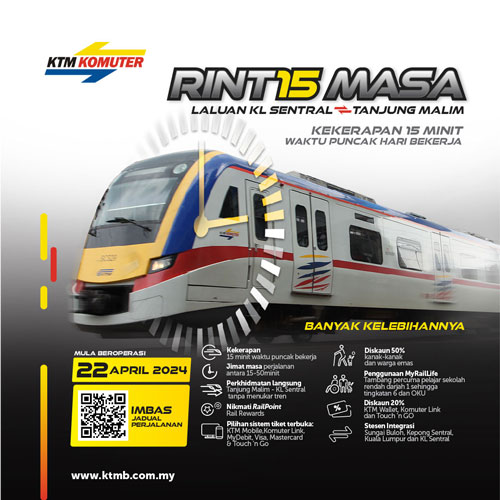
RINT15 MASA
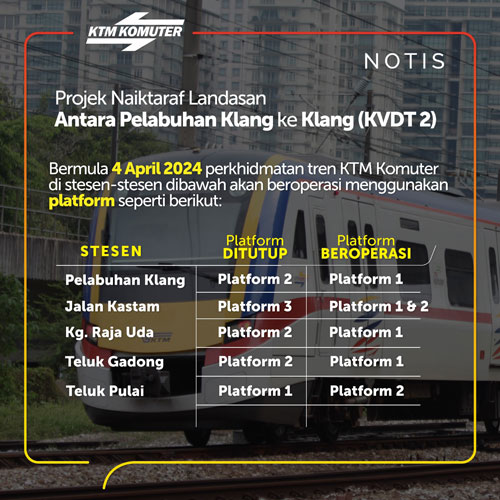
Projek Naiktaraf Landasan Antara Pelabuhan Klang ke Klang (KVDT 2)
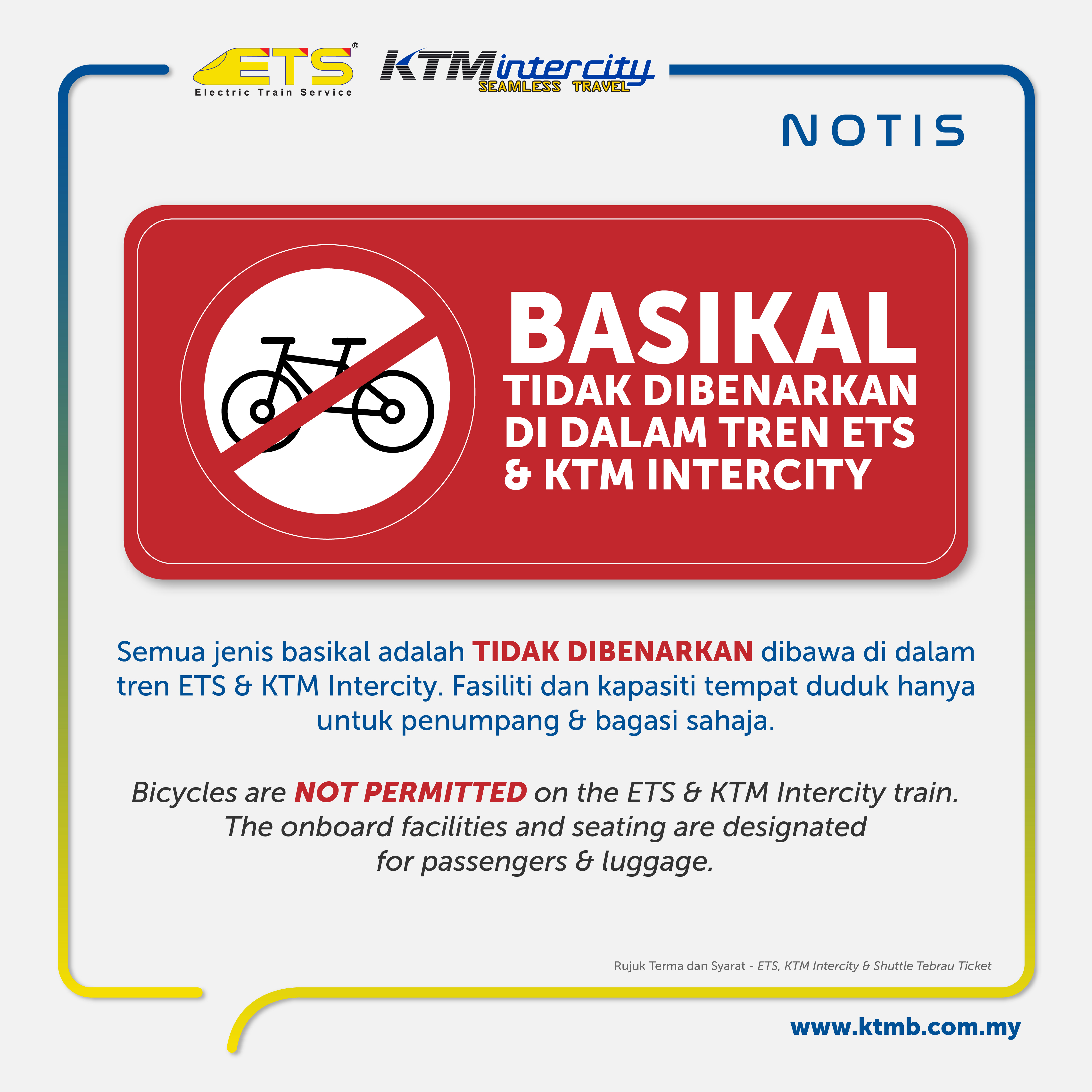
Basikal tidak dibenarkan di dalam tren ETS & KTM Intercity
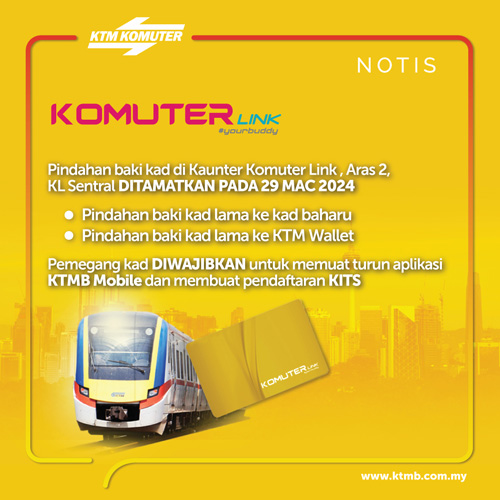
Tarikh Akhir Pemindahan Baki Kad Komuter Link Lama
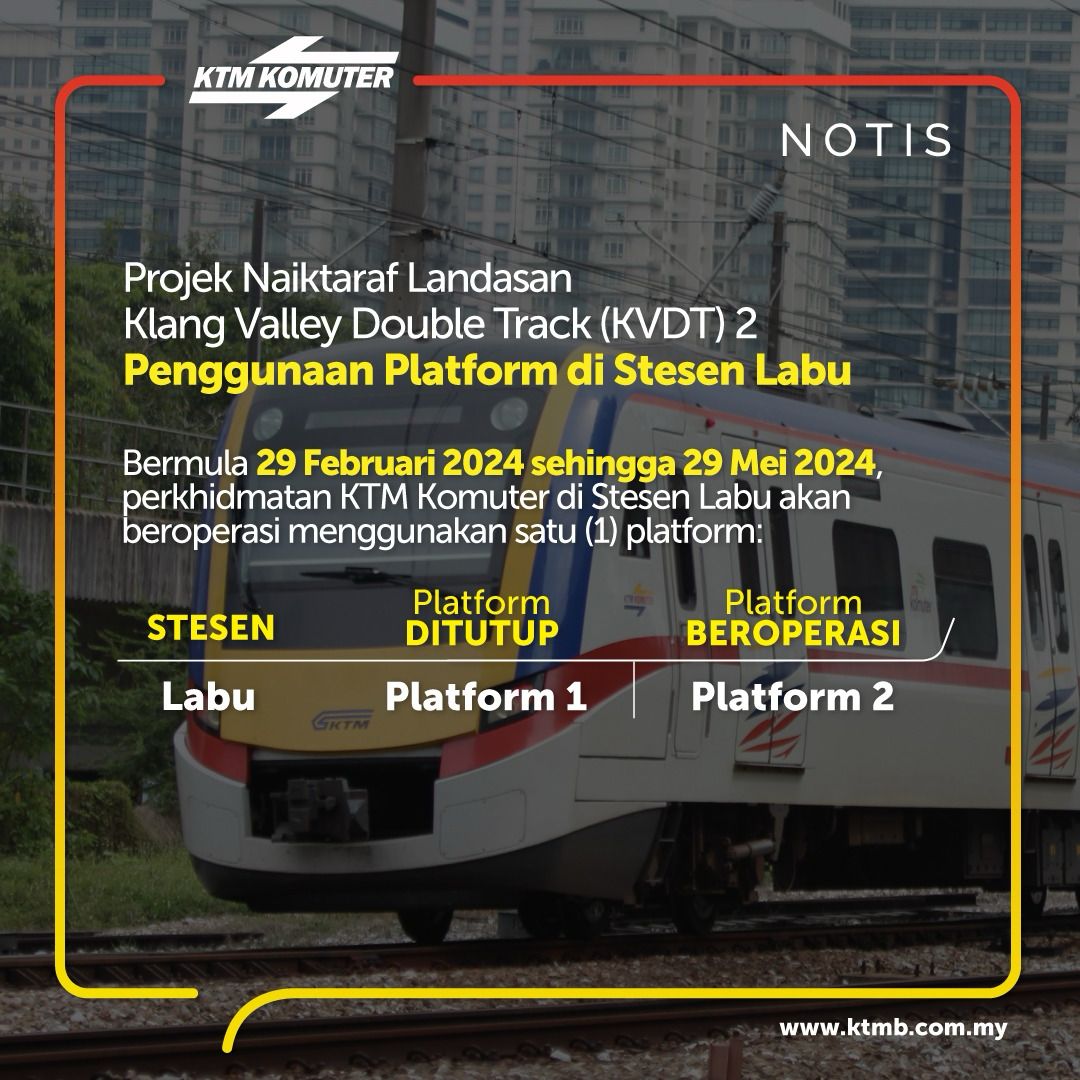
Penggunaan Plaform di Stesen Labu
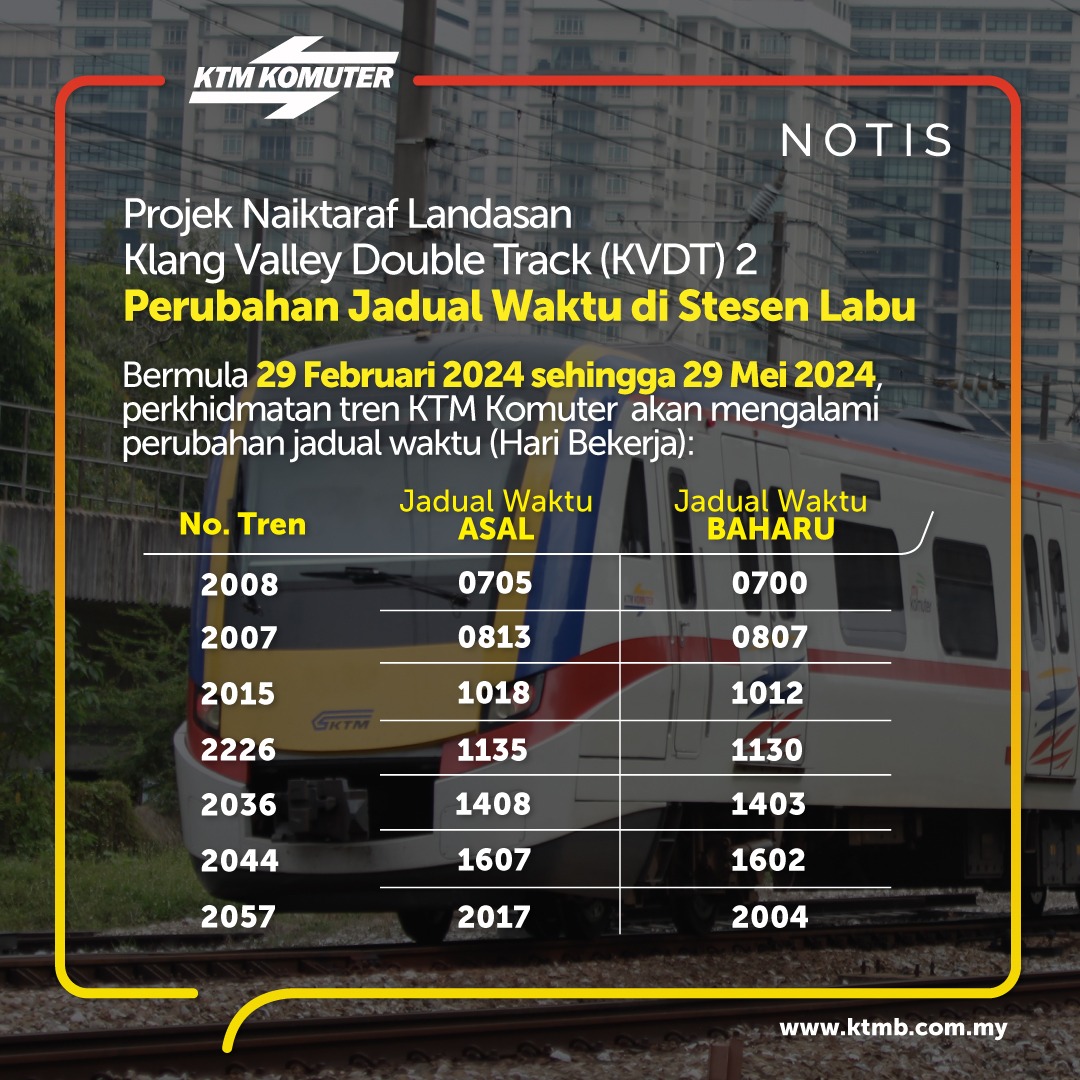
Projek Naiktaraf Landasan Klang Valley Double Track (KVDT) 2 Perubahan Jadual Waktu di Stesen Labu

Tren Khas MySawasdee 2024
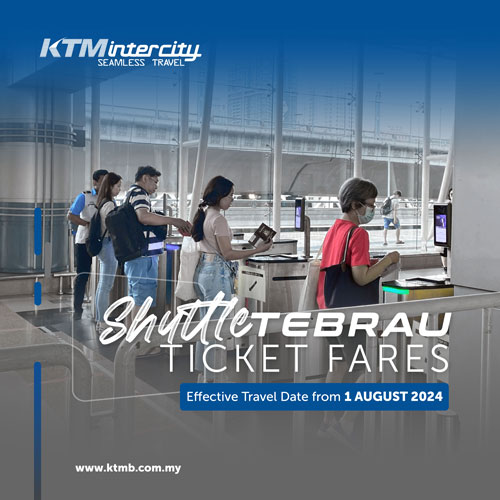
Shuttle Tebrau Ticket Fares
.jpg)
Perak Rail Tourism Packages
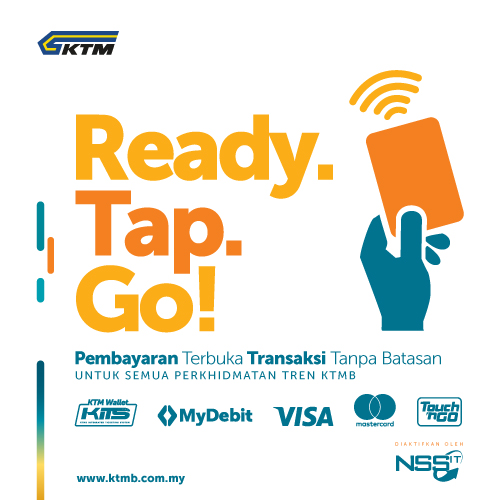
Ready. Tap. Go!
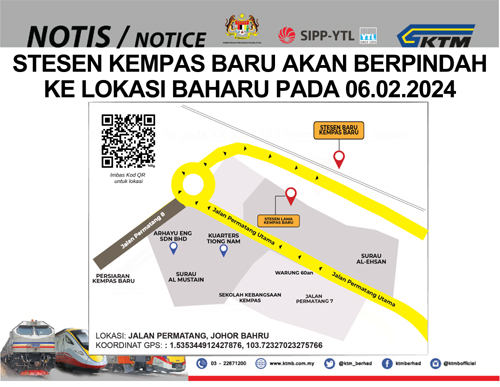
Stesen Kempas Baru Akan Berpindah Ke Lokasi Baharu - 6 Februari 2024
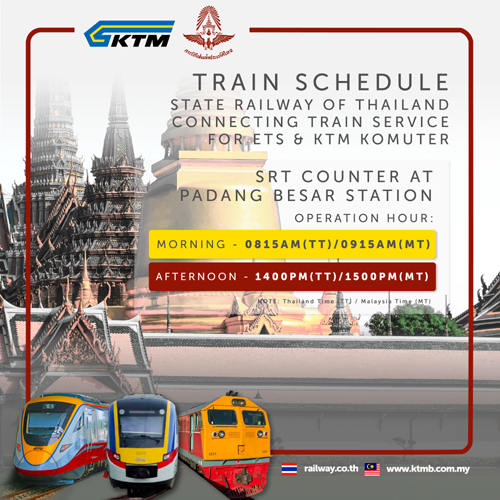
SRT Thailand Train Schedule - Connecting Train Service For ETS & KTM Komuter

Rail Rewards - More Travel More Points
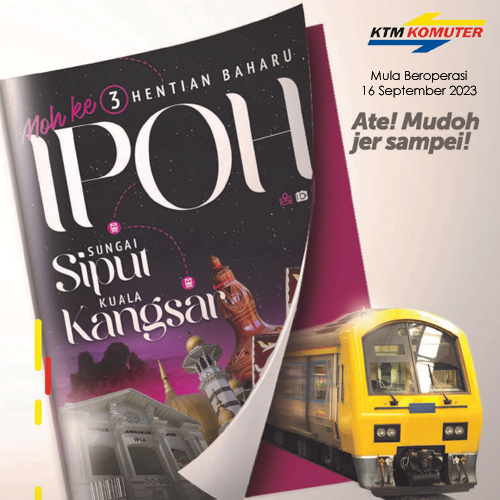
Komuter Utara - Introducing Three (3) New Stops - Kuala Kangsar , Sungai Siput & Ipoh
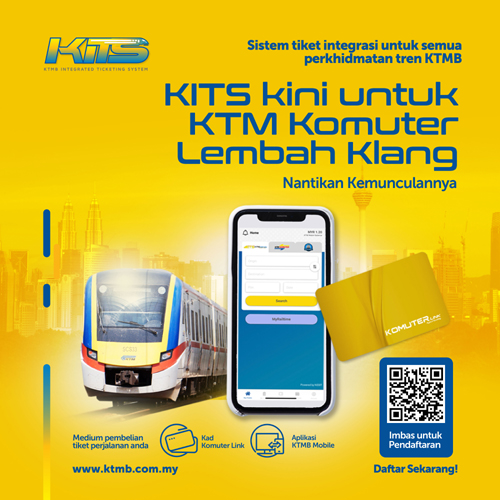
KITS Komuter Lembah Klang
KITS Kini Untuk Komuter Lembah Klang, Nantikan Kemunculannya - Daftar Sekarang
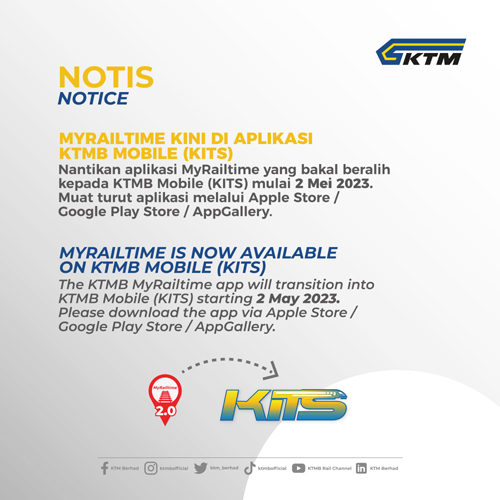
MyRailtime Di Aplikasi KTMB Mobile (KITS) Bermula 2 Mei 2023
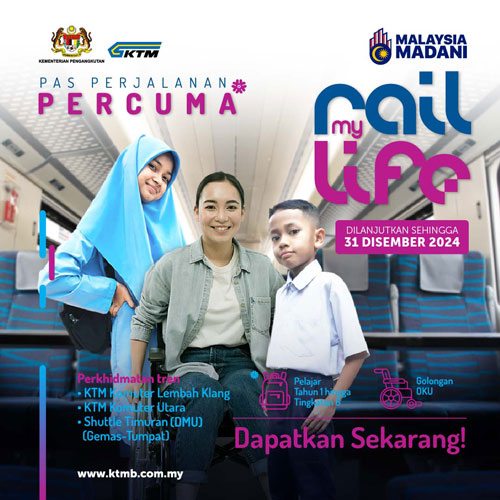
MyRail Life - Pass Perjalanan Percuma Tanpa Had, KTM Komuter & Shuttle Timuran
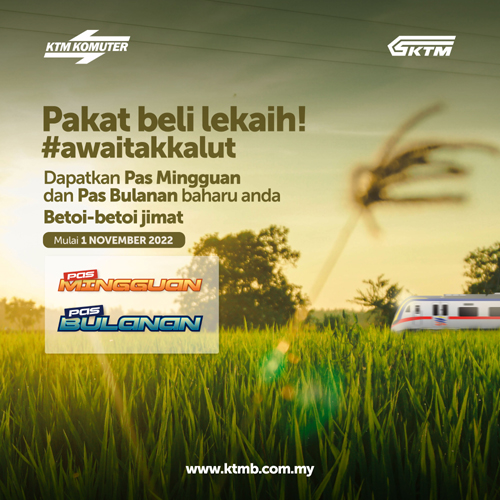
Dapatkan Pas Mingguan & Pas Bulanan KTM Komuter Utara Anda Sekarang!
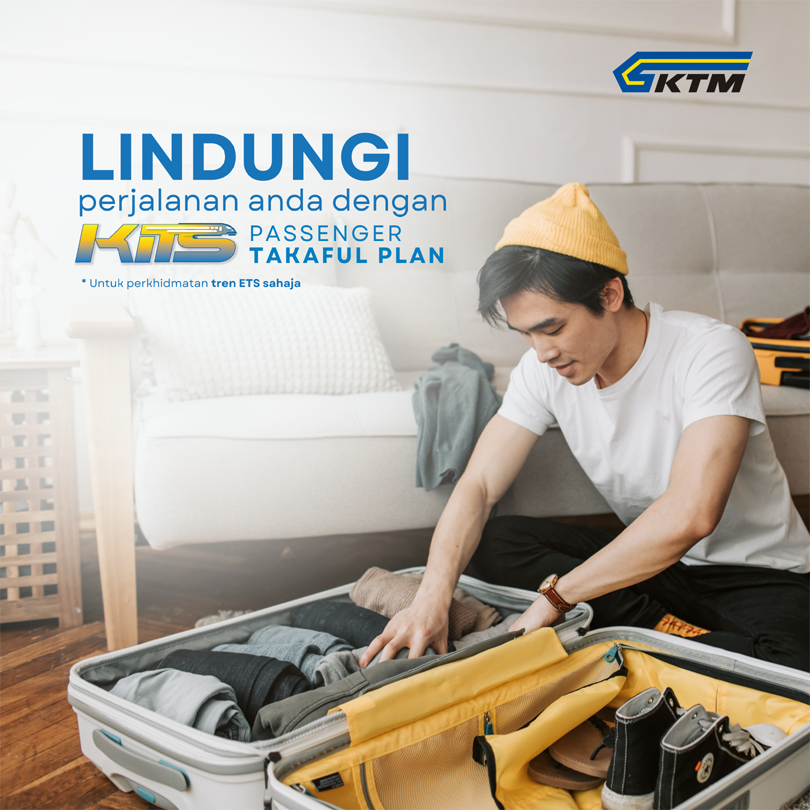
KITS Passenger Takaful Plan Protection for ETS Services
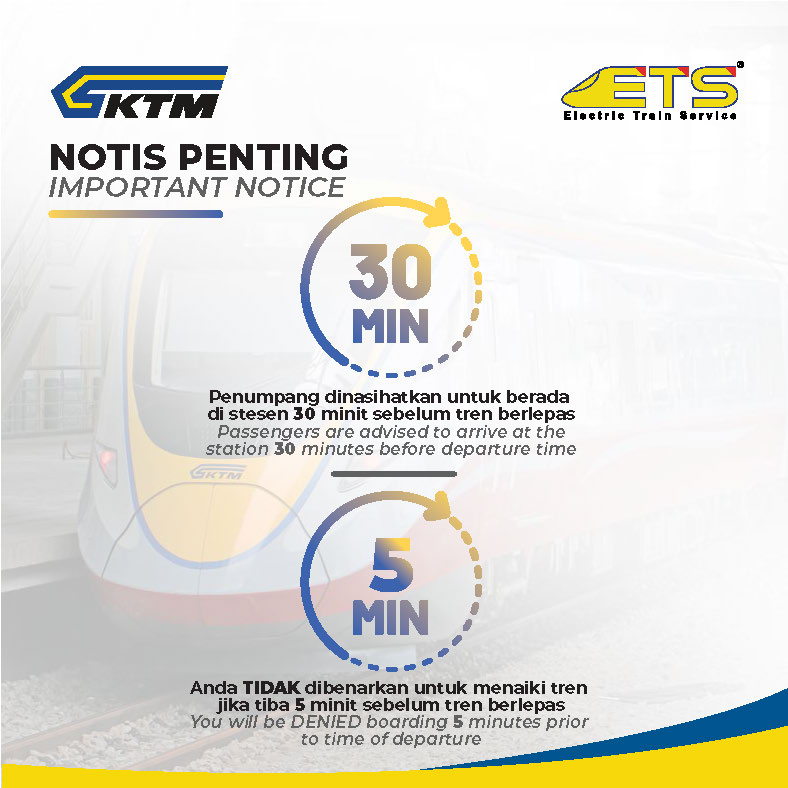
Important Notice
ETS Passangers To Arrive Early At Station 30 Minutes Before Departure Time
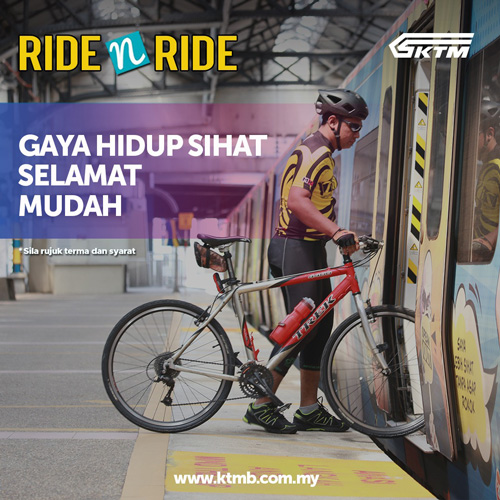
KTM Komuter Ride n’ Ride
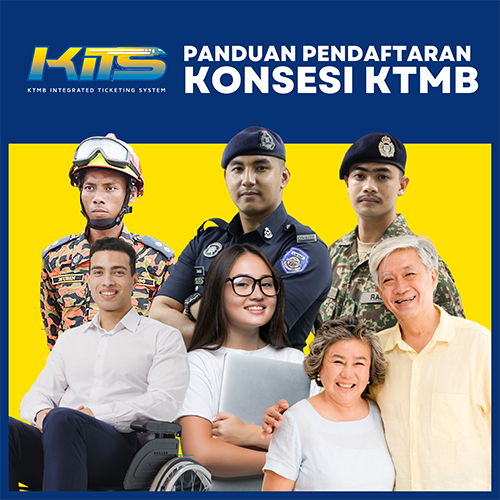
Panduan Pendaftaran Atau Pembaharuan untuk Semua Pemegang Konsesi KTMB
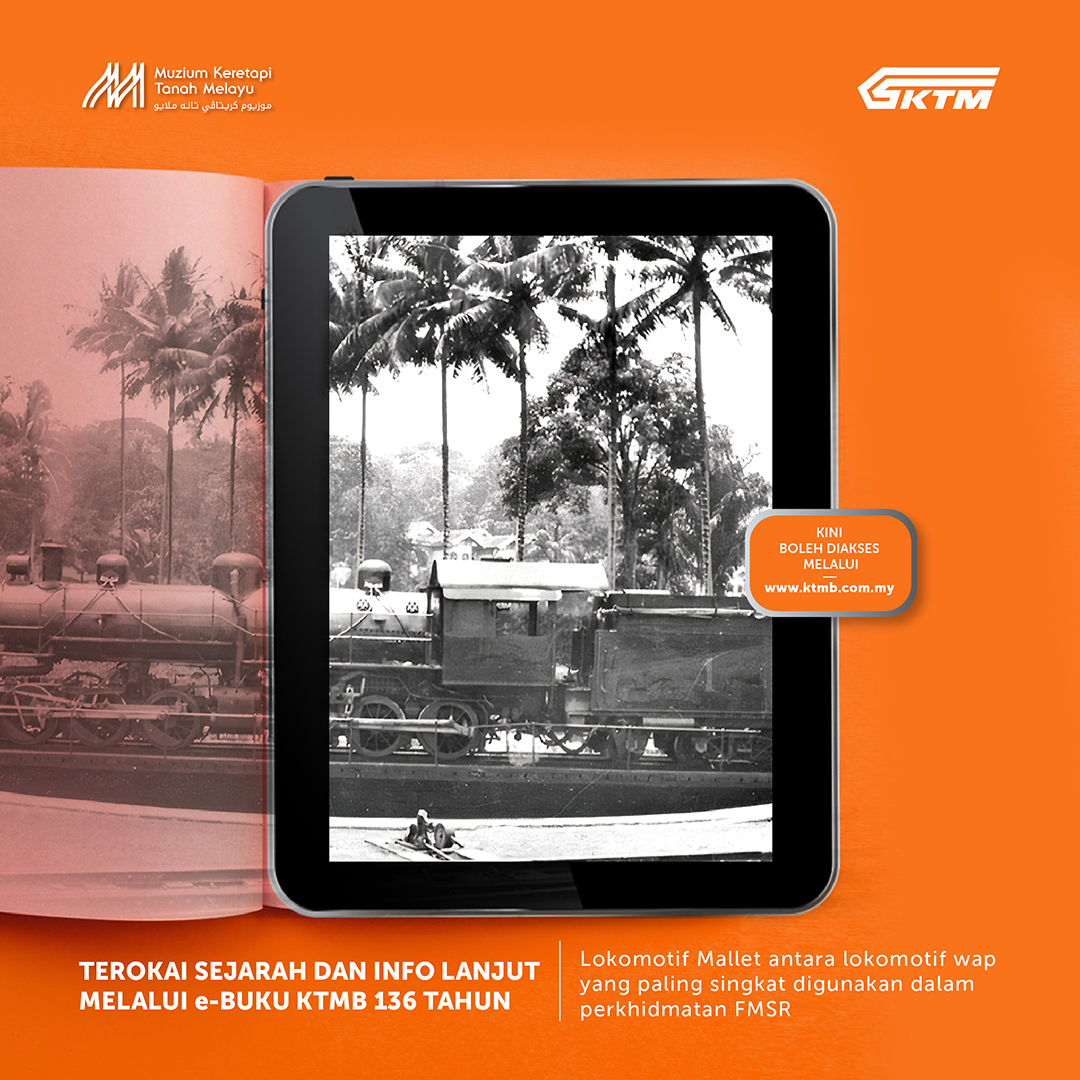
Available Now!..'Menghubung Kehidupan Merungkai Sejarah - KTMB 136 Tahun', e-Book
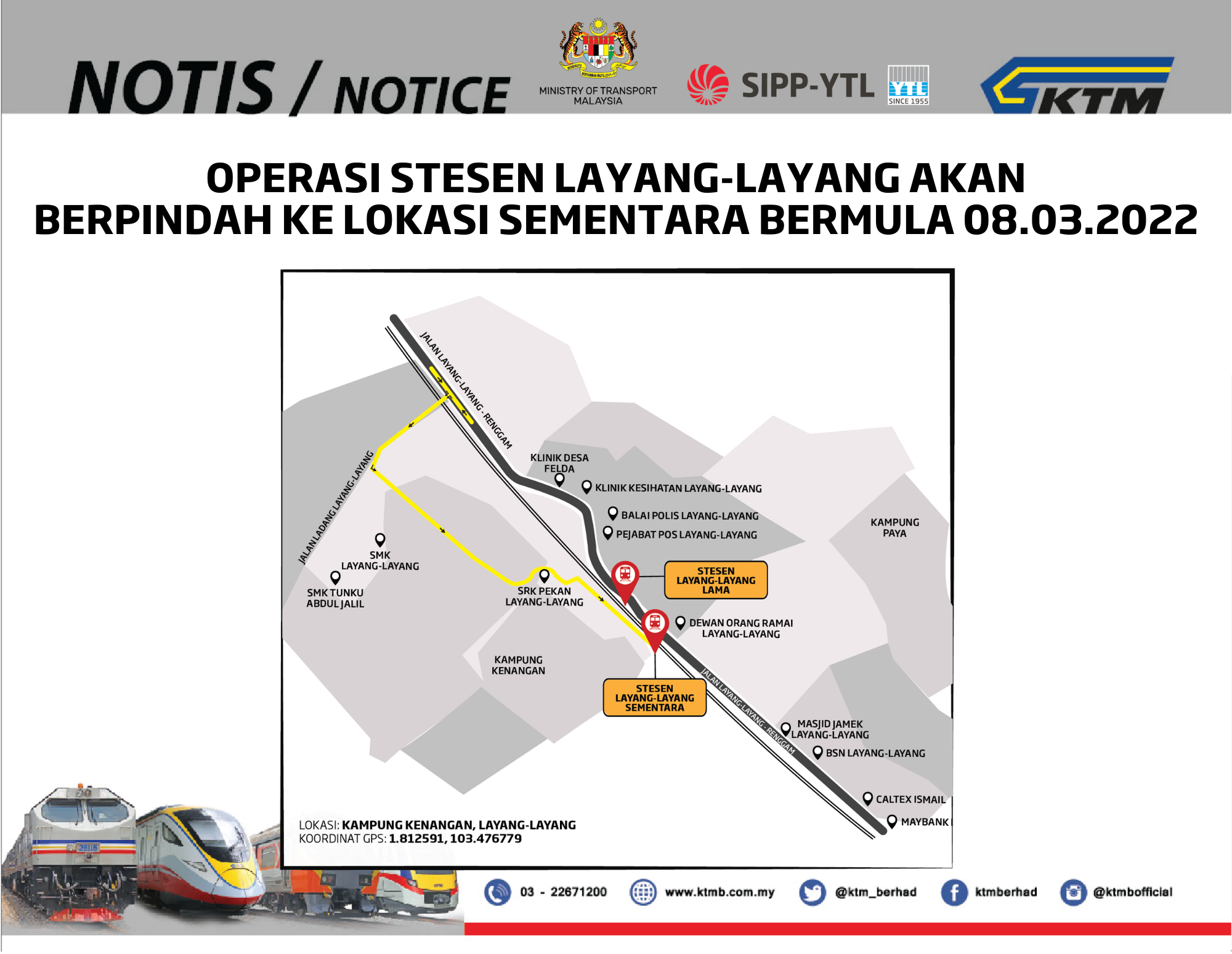
Operasi Stesen Layang-Layang Akan Berpindah Ke Lokasi Sementara Bermula 8 Mac 2022
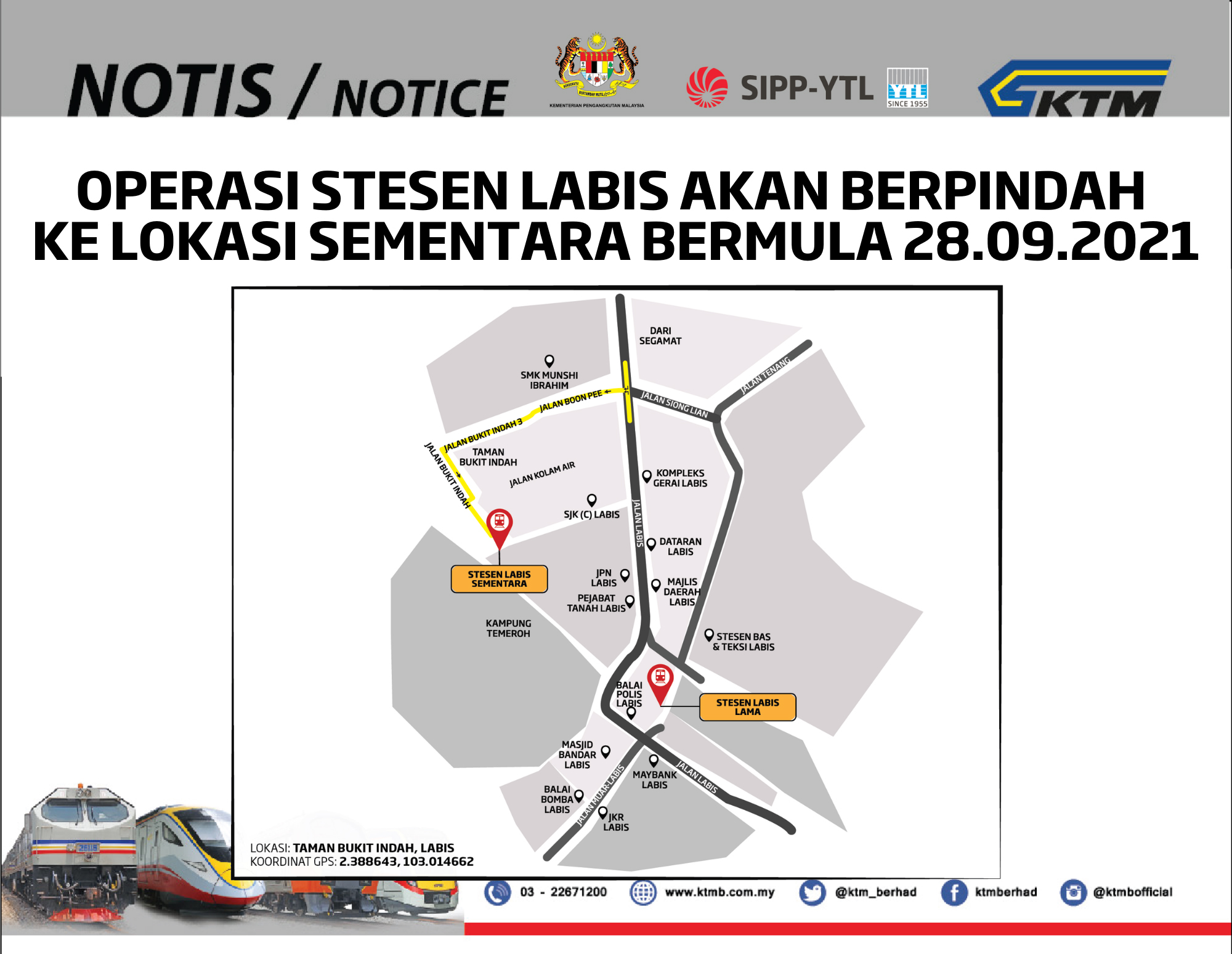
Operasi Stesen Labis Akan Berpindah Ke Lokasi Sementara Bermula 28 September 2021
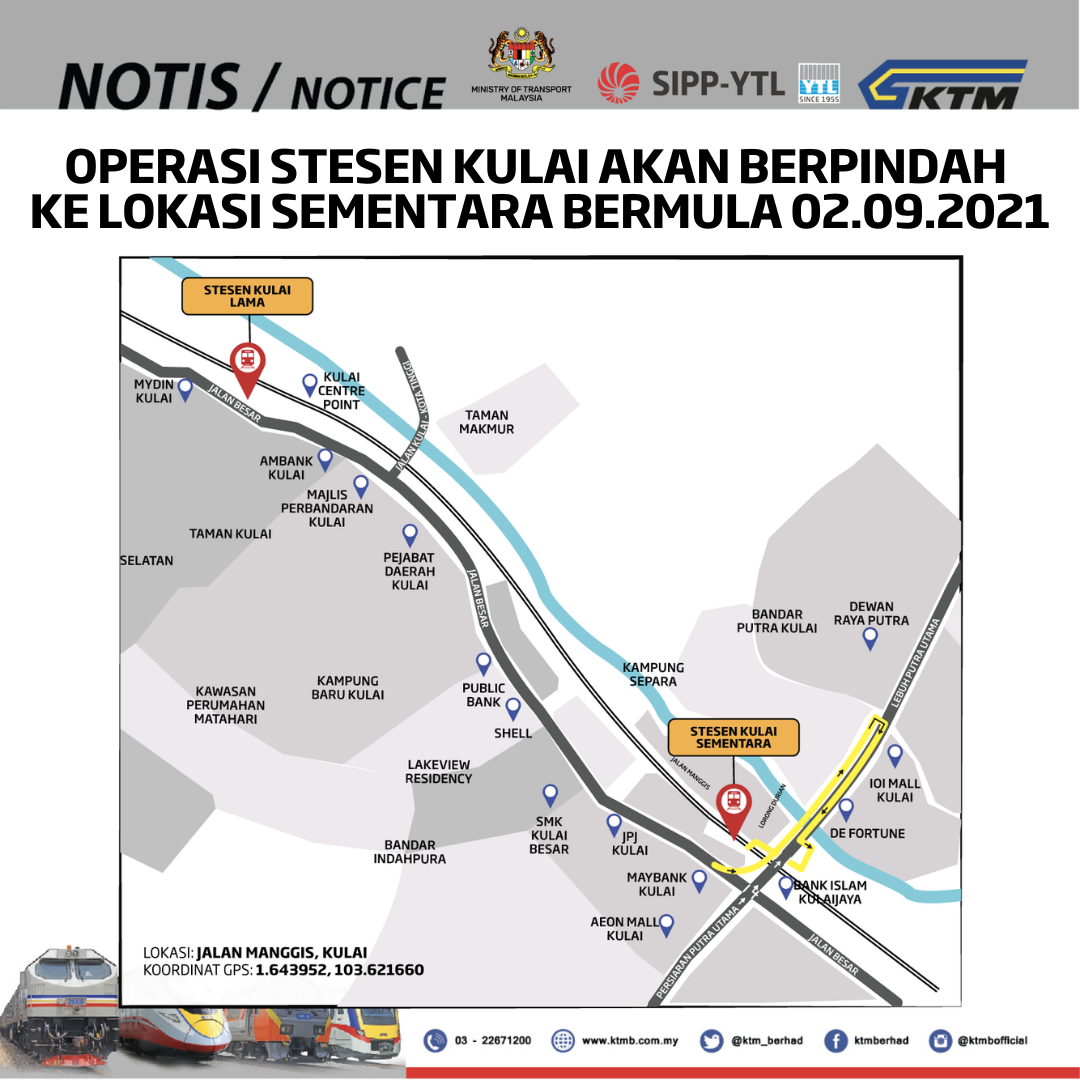
Operasi Stesen Kulai Akan Berpindah Ke Lokasi Sementara Bermula 2 September 2021
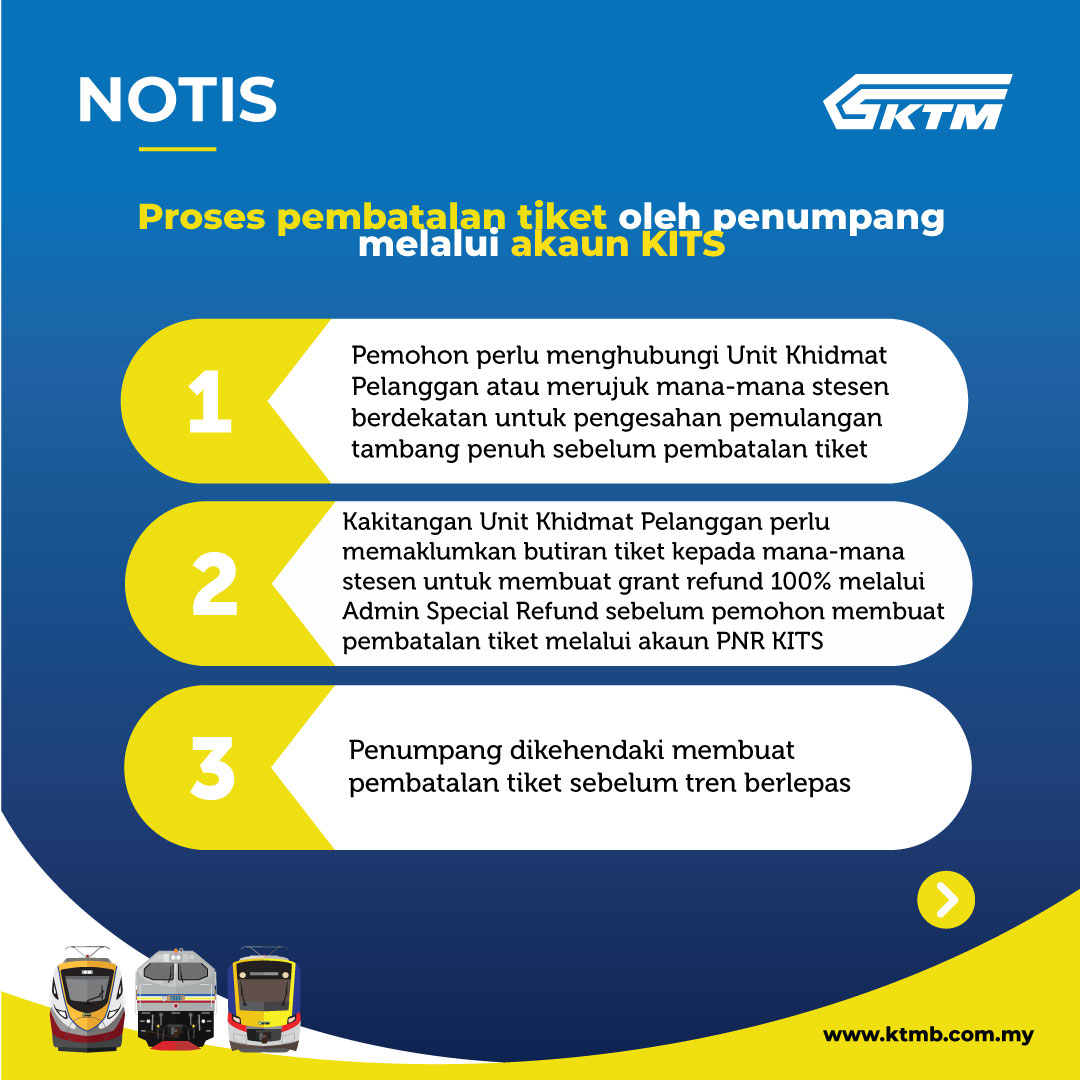
Proses Pembatalan Tiket Untuk Penumpang ETS Melalui KITS

EASYBOOK (M) SDN. BHD. is no longer KTMB ticket agent
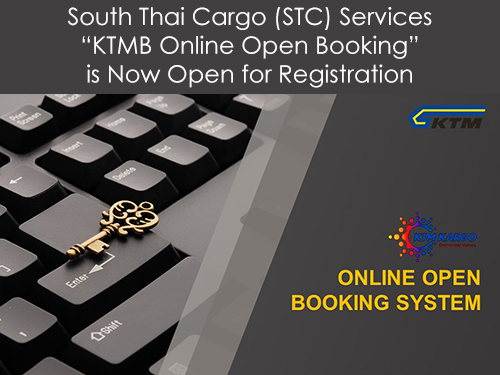
STC Booking
South Thai Cargo (STC) Services - Online Booking Now Open For Registration

Look inside ETS
If you need to travel a long distance quickly, you should think of us.

Groundbreaking with KTM INTERCITY
The chance to enjoy travelling along the iconic line.

Hassle-free with KTM KOMUTER
Country's pioneer rail provider.

Delivering Values with KTM Kargo
Start building a reliable way to connect with people.

Introducing Rail Boutique
Ktmb online merchandise store.
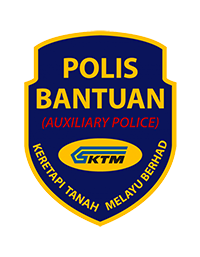
Going on patrol with Auxiliary Police
Ktmb official auxiliary police.

Smart Partnerships
We also provide business opportunities for you.

Charter Train
Your fascinating journey starts here.
- Airport Transfers
- Attractions & Tours
- Flight + Hotel
- Destinations
- Trip.com Rewards
Ultimate guides: How to travel from Singapore to Malaysia?
North-South Expressway:
Malaysia-singapore second link expressway (linkedua):, visa requirements:, 1. petronas towers, 2. aquaria klcc, 3. petaling street market, 4. national mosque of malaysia, 5. menara kuala lumpur, 6. merdeka square, 7. jalan alor, 8. national museum, 9. kl bird park, 10. royal museum, 11. kuala lumpur, 12. masjid jamek sultan abdul samad, 13. little india, 14. sri maha mariamman temple, 15. sultan abdul samad building, 16. kuala lumpur city centre park.
Show More

Singapore and Malaysia are neighboring countries located in Southeast Asia, making traveling between the two countries a popular choice for many tourists and locals. Whether you're traveling for business or leisure, there are several transportation options available to make your journey smooth and convenient.
😉 Read more:
All you need to know before you go: Malaysia entry requirements
The most popular way to travel from Singapore to Malaysia is by road. There are several highways connecting the two countries, including the North-South Expressway and the Second Link Expressway.
The North-South Expressway (NSE), also known as PLUS Expressway , is the longest controlled-access expressway in Malaysia. The expressway links many major cities and towns in western Peninsular Malaysia, acting as the ‘backbone’ of the west coast of the peninsula.
With a total length of around 772 km, the expressway runs from Bukit Kayu Hitam in Kedah near the Malaysian-Thai border to Johor Bahru at the southern portion of Peninsular Malaysia and to Singapore.
The Linkedua is a bridge that connects Singapore and Malaysia, spanning a distance of 47 km from TanjongKupang to Senai in Johor, Malaysia and a twin deck bridge supporting a dual three-lane carriageway linking TanjungKupang in Johor and TuasIn Singapore.
Commuters can enjoy a speedy clearance and a hassle-free journey by Linkedua. This alternative route to the Causeway is certainly much faster, easier and safer.
The Linkedua has already become the preferred choice for transportation of people and goods between Malaysia and Singapore.
If you're driving, you'll need to ensure that you have the necessary documents, such as a valid driving license and vehicle insurance. Alternatively, you can hire a private car or take a taxi to drive from Singapore to Malaysia by causeway bridge or the Second Link bridge. However, be prepared for long queues during peak hours and weekends. Compared with public transportation, and even flights, 4-hour private transfer from Singapore to Kuala Lumpur is the most comfortable and convenient way to get there.
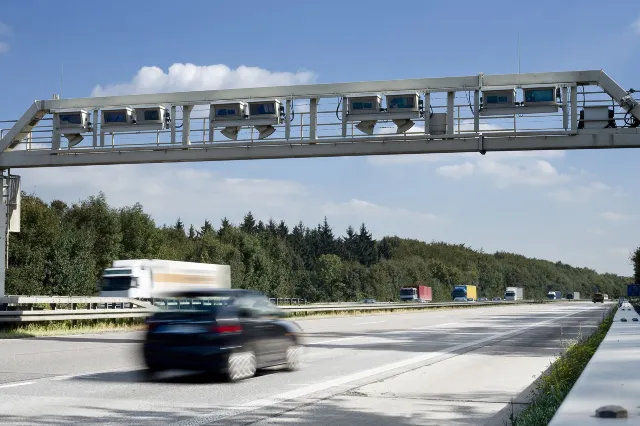
Notice: The Vehicle Entry Permit (VEP) is a permit that allows Singapore-registered vehicles to enter Malaysia. All Singapore-registered vehicles entering via the land borders must obtain this permit. Without the permit, you will not be allowed to drive your vehicle into Malaysia.
Another convenient option for traveling between Singapore and Malaysia is by train. The Keretapi Tanah Melayu (KTM) offers daily services from Singapore's Woodlands Train Checkpoint to various destinations in Malaysia, including Kuala Lumpur and Penang. The train journey is comfortable and offers stunning views of the countryside.
As all KTMB Intercity Trains now terminate at JB Sentral Railway Station in Johor Bahru Malaysia, the only way you can travel from Singapore to Malaysia by train is on one of the KTM Shuttle Tebrau Trains that cross the short distance over the Causeway in just 5 minutes. The popular Keretapi Tanah Melayu Berhad (KTM in short) Shuttle Tebrau service between Singapore and JB is back in operations since 19 June 2022.
These Shuttle Trains between Johor and Singapore are aimed at commuters and are often full during the main rush hours, thus booking a Shuttle Tebrau Ticket online is the only way you can guarantee a seat.
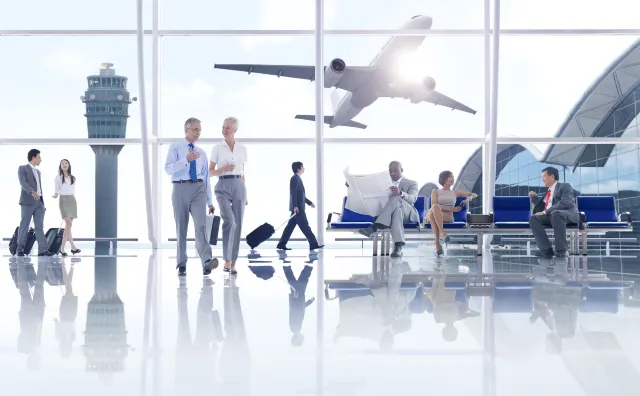
If you're looking for a faster option, you can consider flying from Singapore to Malaysia. There are several airlines that offer flights between the two countries, including Singapore Airlines, AirAsia, and Malaysia Airlines. Flights are frequent and affordable, making it a popular option for those traveling for business or leisure. The journey by air typically takes around one hour, making it the fastest option.
Before you embark on your journey from Singapore to Malaysia, make sure to check the visa requirements. Singapore citizens do not require a visa to enter Malaysia for stays up to 30 days . However, foreign visitors may require a visa, depending on their nationality.
In conclusion, traveling from Singapore to Malaysia is convenient and hassle-free, thanks to the various transportation options available. Whether you prefer to drive, take the train, or fly, there's an option that suits your needs and budget.
With its rich cultural heritage, stunning natural scenery, and delicious cuisine, Malaysia is a destination worth exploring. So pack your bags and get ready for an unforgettable adventure!
Top 16 Best Things to Do in Kuala Lumpur - 2024

Trending Travelogues
Popular travel types, popular attractions, popular ranked lists, popular destinations, recommended attractions at popular destinations.
- Customer Support
- Service Guarantee
- More Service Info
- Website Feedback

- About Trip.com
- Terms & Conditions
- Privacy and Cookies
- About Trip.com Group
Other Services
- Investor Relations
- Affiliate Program
- List Your Property
- Become a Supplier

- Events Calendar 2024
- PR Newswire
- Johor Attractions
- Kedah Attractions
- Kelantan Attractions
- Top KL Attractions
- Labuan Attractions
- Langkawi Attractions
- Melaka Attractions
- Negeri Sembilan
- Pahang Attractions
- Penang Attractions
- Perak Attractions
- Perlis Attractions
- Putrajaya Attractions
- Sabah Attractions
- Sarawak Attractions
- Selangor Attractions
- Best of Terengganu
- Kids' Attractions
- City Walking Trails
- Hiking Trails
- Malaysia Mountains
- National Parks
- Beaches & Islands
- Hill Resorts
- Malaysian Wildlife
- Malaysian Museums
- MM2H Programme
- Malaysian Churches
- Malaysian Mosques
- Chinese Temples
- Hindu Temples
- Sikh Temples
- Thai Temples
- Historic Schools
- Clock Towers
- Lighthouses
- KL Nightlife
- Malaysia Trivia
- Philippines
- Malaysian Railways
- Kuala Lumpur to Singapore Train

Kuala Lumpur To Singapore Train
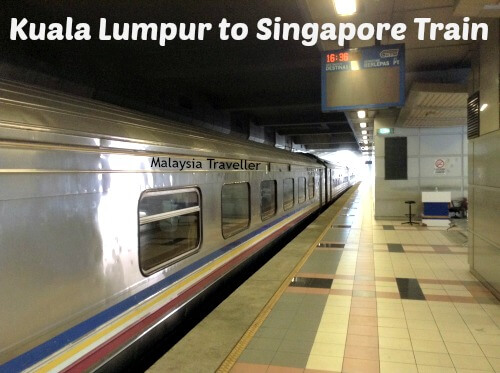
Taking the Kuala Lumpur to Singapore train can be an adventurous experience for rail travel enthusiasts and a cheap way to travel from KL to Singapore. However there are some drawbacks:
- The journey is very long and slow: over 7 hours and, depending on which train you catch, much of it at night.
- The trip across the Causeway from Johor Bahru to Woodlands Singapore together with the two customs and immigration stops adds to the journey time and can be frustratingly slow and tedious.
- The train itself is fiercely air-conditioned and uncomfortably cold.
- Facilities on the train are basic.
Here is a review of my recent Intercity Kuala Lumpur to Singapore train trip (and back).
Update as at January 2024 : The information below is now out-of-date. The journey has become even more complicated and slower - you now have to take the ETS Train from KL to Gemas (taking 2h 34 min), then change to the Gemas to JB Sentral Train (taking 4h 36 min plus waiting time) then the shuttle train from JB Sentral to Woodlands (5 minutes plus waiting time). If you want to take this Kuala Lumpur to Singapore train journey you can book tickets on KTM's website .
A hundred years ago you could do the whole journey on one train. That's progress for you!
Electrification and modernisation of the Gemas to JB section has still not been completed (several years overdue).
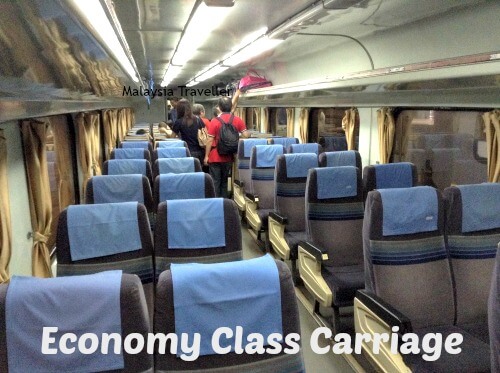
Train Schedule Effective From 10 October 2015
This information is now out of date. I will update once the Gemas to JB electrification is completed . In the meantime refer to KTMB's website for up to date schedules.
Basically there are just three trains per day in each direction:
You will note that the train terminates in JB Sentral (in Johor Bahru, Malaysia). From there you have various options to make your way to Singapore (see Crossing the Causeway below).
Again the train starts at JB Sentral. You have to get from Singapore to JB Sentral first.
You can find the full timetable, including arrival and departure times at intermediate stations, on KTMB’s website .
This shows the stations served by this train:
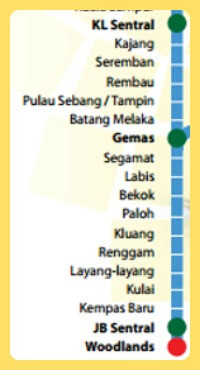
Classes of Travel
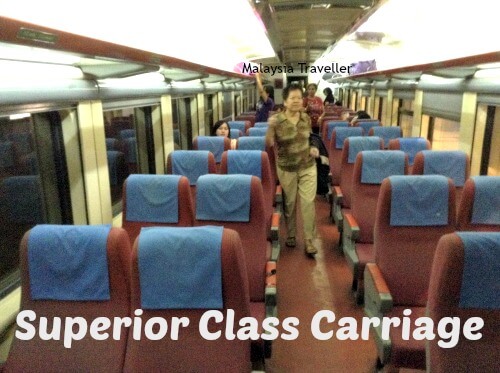
For regular seating there are three classes; Premier, Superior and Economy. I went on Superior (RM33) and returned on Economy (RM18) and there is almost no difference in standard of comfort except that the air-conditioning in Economy was even more freezing than in Superior. Premier class has plusher seating and is more spacious, configured three seats across (two on the left of the aisle and one on the right) whereas Superior and Economy are four seats across.
In Superior and Economy there is no middle arm-rest so not great if you are travelling alone and are seated next to a stranger.
Sleeper berths are popular so better to book well in advance , particularly if you want the best sleeper cabins (Premier Night Deluxe Class).
Update as at 2024: There are no sleeper trains any more on this route.
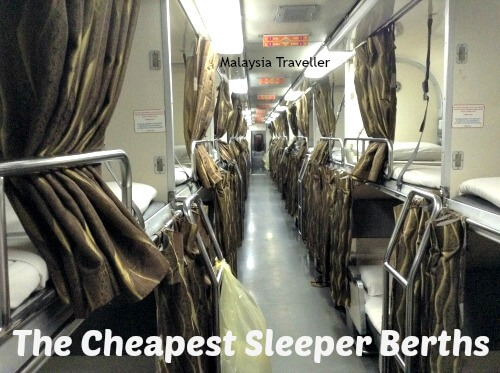
Ticket Prices Kuala Lumpur to Singapore Train
The best class of sleeper cabins have their own private toilet and sink but everybody else has to use the communal toilets situated at the ends of each carriage. They are fairly basic as you can imagine but at least toilet tissue and paper towels are provided which is better than most public toilets in Malaysia.
You may have a cafeteria coach on your train which sells simple meals, snacks and drinks (non alcoholic).
The Kuala Lumpur to Singapore train has lengthy stops at some stations (up to 15 minutes) giving time for passengers to get off, warm up and for smokers to light up.
How to Book Tickets
You could just turn up at KL Sentral and buy tickets at the station but if you want to be sure of getting a seat or a berth it is probably better to book online in advance through KTMB's website , or through one of the online ticket websites.
Crossing the Causeway
The most painful part of the journey to Singapore is crossing the Causeway which divides the two countries. The train terminates at the modern and spacious JB Sentral station in Johor Bahru. Passengers wishing to proceed on to Singapore have to exit JB Sentral through a series of pedestrian walkways and escalators and enter the adjoining Customs, Immigration and Quarantine (CIQ) Complex, also known as Bangunan Sultan Iskandar. More escalators and corridors lead you to the Malaysian Immigration counters where you have to get your passport stamped for leaving Malaysia.
Then you have to cross the Causeway (bridge) itself and you can either take the train known as Shuttle Tebrau to Woodlands ( a 5 minute journey) or a bus (journey time depends on traffic conditions but long delays at peak times are normal).
I was planning to take the Shuttle train but did not realise that they get booked up 28 days in advance as the service is mainly used by workers doing their daily commute to and from Singapore. So I had to take the bus (many bus operators to choose from) which took about 30 minutes to reach the Woodlands (Singapore) side of the Causeway where you have to disembark and be processed at Woodlands CIQ. More queuing at Immigration counters (you even have to fill in an arrival card) then baggage X-ray before descending to the bus platforms to find your bus for the next onward stage of you journey in Singapore.
When returning from Singapore back to Malaysia it is the same tedious procedure in reverse.
Of course if you take the long distance coach from KL instead of the train you still have to go through the double CIQ hassle. Even if you are driving your own car, there are long queues to cross the Causeway.
Next time I go to Singapore I think I will fly to save the bother.
Changes Coming to the Kuala Lumpur to Singapore Train
The extension of the Electric Train Service is continuing. Already the ETS runs as far south as Gemas (as at March 2016) and the plan is to complete it all the way to JB Sentral in the coming months. When completed the journey time will be reduced and there will be more frequent trains.
Further into the future is the planned High Speed Train from KL to Singapore, a bullet-style train which could reduce the journey time to just a couple of hours. This project is still at the advanced planning stage so I imagine it will not happen for another 5 years or so. Update as at January 2021: The High Speed Rail project has sadly been scrapped. Disappointing!
Share this page:
Like this website? Head over to my Facebook page and leave a like or comment:
You can also contact me via the link at the bottom of this page.
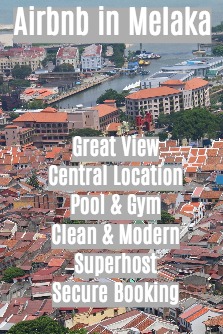
Recent Articles
Wonderfood Museum Penang - Plastic Has Never Looked So Tasty!
Mar 29, 24 12:36 PM
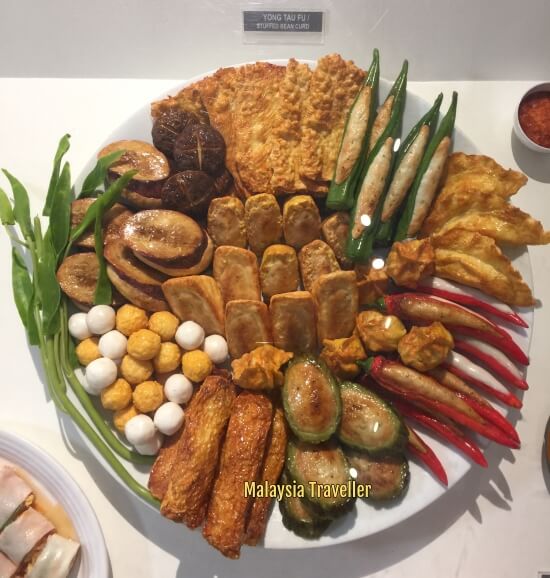
Wind Cave Nature Reserve, Bau, Sarawak
Mar 29, 24 12:12 PM
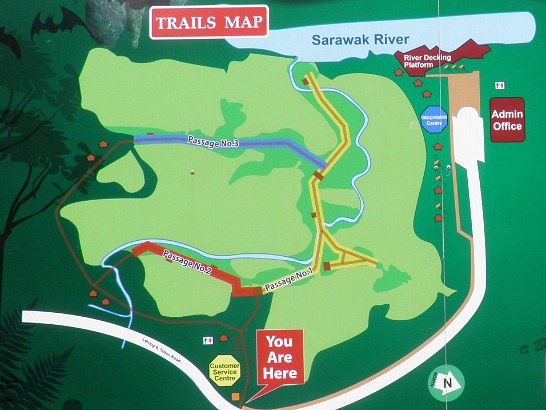
Malaysian Vehicle Registration Plates
Mar 29, 24 07:22 AM
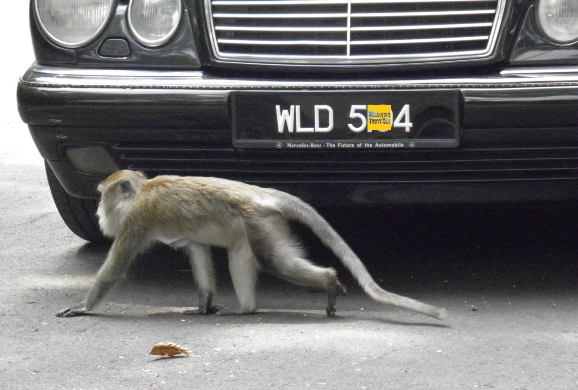
More Recent Articles Here
Getting Around
- Free KL City Bus
- KL Hop-On Hop-Off
- BRT Sunway Line
- Malaysia By Coach
- Malaysia By Train
- Pangkor Ferry
- Marina Island Ferry
- Penang to Langkawi Ferry
- Visa Requirements
- Pet Friendly Hotels
- Majestic Hotel KL
- Hotels in Melaka
- Hotels in Penang
- Hotels in Putrajaya
- Port Dickson Resorts
CONTACT ME | PRIVACY POLICY | TRAVEL BLOG | ABOUT ME
Over 11 Million Unique Visitors Served Since 2011. Over 29 Million Page Visits. Statistics up to end May 2024.
Nomadic Notes
Travel blog and weekly travel newsletter
Kuala Lumpur to Singapore by train
June 6, 2024 By James Clark 1 Comment

Getting the train from Kuala Lumpur to Singapore involves three separate train journeys. Here are the trains to book and how to buy the tickets.
There used to be a direct train service from Kuala Lumpur to Singpaore. That service was discontinued in 2011, and the rail corridor in Singapore has been turned into a walking path and nature reserve.
It’s still possible to get the train from Kuala Lumpur to Singapore, but it requires planning. There is only one combination of trains if you want to travel on the same day. This is because the rail line is being upgraded to a double-tracked electric service. Half of the project is completed, so the journey requires a change of train at Gemas. As for the Singapore section, there is a separate shuttle train that crosses the border, and that also requires a separate ticket.
Booking tickets
To add to this inconvenience of multiple trains, the tickets need to be booked separately as the official rail site doesn’t sell combined tickets.
Before making a booking, make sure there are tickets available on the same day. I’ve made the mistake of booking one leg only to find out that the other leg had sold out.
To do this, go to online.ktmb.com.my and open two separate browsers and do a search for each leg:
Train 9321: Kuala Lumpur (KL Sentral) to Gemas.
Depart KL Sentral: 12:19 Arrive Gemas: 14:52

Train 45: Gemas to Johor Bahru (JB Sentral).
Depart Gemas: 15:20 Arrive JB Sentral: 19:45

Shuttle Tebrau 91: For Johor Bahru to Woodlands (Singapore), check at shuttleonline.ktmb.com.my/Home/Shuttle .
Depart JB Sentral 20:15 Arrive Woodlands 20:20

This is the segment that will sell out in advance the fastest. There are two more trains after 20:15 but it is getting late by then.
KL to Singapore trains
Ets 9321: kl sentral to gemas.
The first section from KL to Gemas is ETS 9321 from Butterworth. This is a through-train that stops at KL Sentral.

The ETS trains travel at speeds of up to 140 km/h so this the quickest leg of the journey.

ES 45: Gemas to JB Sentral
Gemas is as far south that the electrified double-tracking rail project has reached. At Gemas, service ES 45 is waiting on the opposite platform for onward travel.
ETS 9321 arrives at Gemas at 14:52. and ES 45 departs Gemas at 15:20. Read more about ES 45 from Gemas to JB Sentral .
Shuttle Tebrau: JB Sentral to Woodlands
The final leg is from JB Sentral to Woodlands via the Shuttle Tebrau .

This is a popular service as it’s a much quicker way to cross the border than using the shuttle bus service. The immigration process takes about 15 minutes, even if it is busy. I saw some veteran border crossers that knew what carriage to get on in order to be the first in the immigration queue, but even when I was at the back of the queue the line moves fast.

As if getting three trains wasn’t complicated enough, Woodlands is not connected to a metro station. I walked to the nearest station at Marsiling MRT Station, which is 1.5 km/22 minutes away (according to Google Maps). You are then looking at another hour of travel time on the MRT to get to Central Singapore.
By the time you check in to your hotel you might be reconsidering if it’s worth doing this trip in one day. This is not an efficient way to travel if you need to be in Singapore that day. If you are travelling overland and have time, I would stay over night in JB and explore the Old City area the next morning before getting on the shuttle to continue your journey.

Singapore to Kuala Lumpur by train
Going from Singapore to KL by train also requires planning. Here is how to go from Singapore to Kuala Lumpur by train .
Future KL-Singapore train services
Kl-jb ets services.
The Gemas-Johor Bahru electrified double-tracking rail project is expected to by completed by 2025. Once that is finished then ETS services will run from KL to JB in one service. There should be numerous services a day so you won’t be restricted to the current combination.
The ETS will not be extended to Singapore though, so it will still require a second train. There is a new urban rail link being built from JB to Singapore (RTS Link), so passengers will be able to show up and ride without needing to prebook a ticket.
Kuala Lumpur – Singapore High-Speed Railway
In addition to the current West Coast Line, a high-speed railway from KL to Singapore is being planned. This will travel on a different alignment and not pass through JB Sentral. This is still in planning, so it could be years away from being a reality. If it is built then there will be two different ways to travel from KL to Singapore by rail.
More Malaysia and Southeast Asia rail travel
This article is part of the Nomadic Notes train travel series . Read more about Malaysia train travel and Southeast Asia train travel .
About James Clark
James Clark is the founder of Nomadic Notes. He has been a digital nomad since 2003, and Nomadic Notes features trip reports, train travel articles , and where to stay guides . He writes about transport and urban development at Future Southeast Asia . Subscribe to the weekly travel newsletter .
June 6, 2024 at 8:41 am
I still find it somewhat puzzling that through services to Singapore have been discontinued and that Malaysia has not seen the benefits of connecting their services both to Singapore and at the other end into Thailand. One would have thought is was a no brainer and the politicians and bureaucrats should be ashamed of themselves. Is KL /Singapore still the busiest air route? I wonder why
Leave a Reply Cancel reply
Your email address will not be published. Required fields are marked *
Notify me of follow-up comments by email.
Notify me of new posts by email.

About Nomadic Notes
Search nomadic notes, travel resources, where to stay in…, travel newsletter.

Southeast Asia Travel Guide
Last Updated: November 27, 2023

Backpackers have been traveling through Southeast Asia since the late 1960s and early 1970s, leaving a well-worn trail around the region.
Starting in beautiful Thailand, the trail makes its way to up-and-coming Laos, through Vietnam, and to the temples of Angkor Wat. It then winds back into Thailand, where people head south to party in the Thai islands before moving down to Malaysia and Singapore.
There are a few variations to the trail, but this is what it mostly covers.
I’ve been visiting this region since 2004 and spent years living in Thailand . I love backpacking Southeast Asia and have written extensively about it as I know it like the back of my hand.
It’s an especially great region for new travelers because it’s easy to travel around, it’s safe, and there are lots of other travelers you can meet. But it’s also perfect for veteran travelers too as there are tons of off-the-beaten-path destinations that the standard backpacker trail doesn’t cover.
In short, Southeast Asia has something for every traveler — and every budget.
This Southeast Asia travel guide will help you travel the region like a pro, ensuring you save money and make the most of your time in this fun, gorgeous, and lively corner of the world.
Table of Contents
- Things to See and Do
- Typical Costs
- Suggested Budget
- Money-Saving Tips
- Where to Stay
- How to Get Around
- How to Stay Safe
- Best Places to Book Your Trip
- Related Blogs on Southeast Asia
Click Here for Country Guides
Top 5 things to see and do in southeast asia.
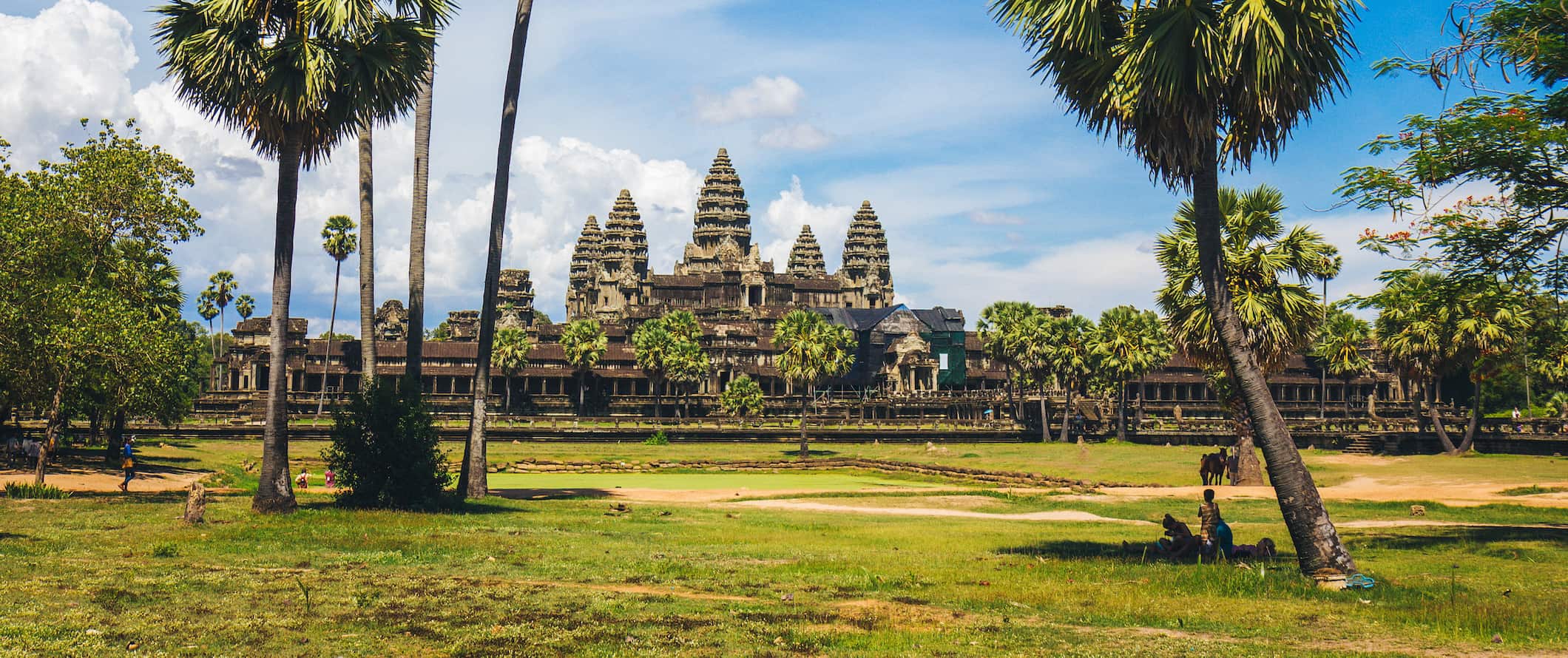
1. Admire Angkor Wat
One of the greatest human creations in history, the Angkor Wat temple complex is best explored over the course of a few days. The area is a UNESCO World Heritage Site created by the Khmer Empire and absolutely enormous. Temples to visit include Angkor Wat, Bayon Temple which has 216 gigantic stone face carvings, and Ta Prohm. I spent three days here and that simply wasn’t enough. A one-day pass is $37 USD, while a 1-week pass is $72 USD. If you’re here for multiple days, be sure to hire a driver and see some of the more out of the way ruins away from the main temple complex (and the crowds).
2. Explore Bangkok
Bangkok is the hub of travel activity in Southeast Asia. You can get anywhere you want from here. Though I hated it at first, the more I’ve spent time here the more I love it. Bangkok is like an onion whose many layers need to be peeled back. Some things not to miss include the spectacular Bangkok Grand Palace, Wat Pho, Chatuchak Market and Asiatique, and a canal trip on the Chao Phraya River. This is a city for foodies and wild nightlife.
3. Relax on some tropical islands
No visit to Southeast Asia would be complete without a visit to at least one of the thousands of tropical islands in the region. My top five include the Perhentian Islands (Malaysia), Rabbit Island (Cambodia), Ko Lanta (Thailand), and Boracay (Philippines). Lombok Island (Indonesia) has a chill vibe with unspoiled, perfect “desert island” beaches. There’s so many islands to visit. Be sure to add at least one to your trip. The country guides will have more information for you.
4. See Ha Long Bay
Sailing trips to this island-filled bay with stunning emerald waters, limestone formations, and marine life give you an appreciation for the natural beauty in Vietnam. Tours from Hanoi start at around $110 USD for two-day trips and increase from there. I love the colorful grottoes, hanging stalactites, and stalagmites of Surprise Cave (Sung Sot), Fairy Cave (Tien Ong), and Heaven Palace (Thien Cung). Make sure you go with a reputable company though as some of the cheaper boats are less than ideal. If you’d rather just visit for one day, day trips from Hanoi cost $55 USD.
5. Wander Kuala Lumpur
Other things to see and do in southeast asia, 1. go jungle trekking.
This region of the world is covered in amazing jungles with diverse wildlife, plentiful camping opportunities, and cool waterfalls. The best jungle treks are found in northern Thailand, Western Laos, and Malaysian Borneo (the latter are also the hardest and most intense). Some of my favorites include Danum Valley (Borneo) for its incredible wildlife; Ratanakiri (Cambodia) for its pristine wilderness and thousand-year-old trees; and Pu Luong Nature Reserve (Vietnam). Costs vary but jungle trekking generally costs $30-50 USD per day.
2. Attend the Full Moon Party
The biggest one-night party in the world welcomes up to 30,000 people with a party that stretches until dawn. Cover yourself in glow paint, grab a bucket of booze, and dance the night away with new friends on the island of Ko Phangan in Thailand. As the name would suggest, the party is on the night of the full moon. If you miss it, there’s always the half-moon party, quarter-moon party, and black-moon party. Really, every night is a party on Ko Phangan . Just avoid the flaming jump rope that occurs — I’ve seen people get burned badly!
3. Learn to dive
There are many great dive sites around the region for those interested in underwater exploration. You can learn to dive here at a fraction of what it would cost back home too. Some of the best places are Ko Tao (Thailand), Sipadan (Malaysia), as well as Gili Islands (Indonesia) and Coron, Palawan (The Philippines). A typical diving course is completed in three days. A PADI course typically runs $275 USD in Thailand, including three nights’ accommodation, though at smaller schools you can often negotiate down to $250 USD. Day trips for certified divers start at $165 USD. For information on Ko Tao, check out this blog post .
4. Eat street food in Singapore
Singapore is a foodie’s heaven. Try the hawker stalls of Singapore as well as Little India and Chinatown for some of the best and cheapest food in Asia. If you’re looking for a nice place to sit down and eat, eat at Singapore’s famed restaurants during lunch when restaurants offer discounts, making them a great deal. You’ll also find the most affordable Michelin-starred restaurants here (Tian Tian Hainanese Chicken Rice and Hawker Chan), offering world-class meals for just a couple of bucks!
5. Overload on temples
You can’t turn a corner without seeing a Buddhist temple in this part of the world. You’ll get temple overload at some point but visit as many as you can as each is unique to the country and region of the temple. There are so many places with high concentrations of ornate and beautiful temples. Check out Chiang Mai’s Wat Doi Suthep Temple and hike up the 300 steps to the golden Chedi that’s 600 years old!; Bagan’s Shwesandaw Pagoda from the 11th century with its stunning golden dome; Angkor Wat’s Ta Prohm is covered in iconic vines and enveloped in ancient jungle roots; Hue’s colorful Thien Mu Pagoda is perched atop a lush green embankment; Hoi An’s Quan Cong Temple with incredible Chinese architecture with hand-carved beauty and skill, and Luang Prabang’s Vat Xieng Thong with its golden, canopied roof. Most are free to enter, however, dress codes are enforced (you need to have your shoulders and legs covered).
6. Dive Sipadan
Located off Malaysian Borneo, Sipadan is one of the best dive sites in the world. If you have your dive certificate, make sure you venture out here. I absolutely love this area because it’s teeming with live turtles, diverse cave systems, sharks, dolphins, colorful coral, bright fish, and everything in between. Not a lot of people make it to this part of Malaysia, but it’s worth it to go the extra mile and make your way off the tourist trail a bit. Don’t miss Barracuda Point and The Drop-Off. Keep in mind that only 176 permits to dive at the island are issued each day, costing 140 MYR per person. The resorts on the neighboring islands each get a specific number of permits per day and require divers to stay with them for a few days. So you’ll need to stay at those resorts and dive into the surrounding areas before they can get you a Sipadan permit.
7. Fall in love with Bali
Bali is the most popular destination in Indonesia, and its famous Kuta beach is known for its wild parties and surfing ( though I think it’s overrated ). However, there is much more to Bali than just wild nights and sun-soaked days. If you’re a thrill seeker, hike up to the top of Mount Batur, an active volcano, for a breathtaking sunrise. Paragliding and white water rafting are also super popular here, as is surfing (it’s an affordable place to learn if you’ve never done it). There are also lots of hot springs to enjoy, the Ubud Monkey Forest (a popular temple and nature reserve home to hundreds of monkeys), and numerous places to scuba dive, including the Liberty wreck and Manta Point.
8. Take in Ho Chi Minh City
Frantic, chaotic, and crazy, Ho Chi Minh City in Vietnam is the embodiment of the controlled chaos that rules Southeast Asia. You can’t quite figure out how this teeming mass of people and cars work together, but it does. Highlights here include touring the tunnels used by the Viet Cong in the 1960s, taking in the view from the Saigon Skydeck, eating your way through the street food scene, and seeing the city’s numerous temples.
9. Admire the sunrise over an Indonesian Volcano
One of the most popular tourist attractions on Java is Mount Bromo and its National Park. Don’t miss out on getting a photo of the smoldering Bromo volcano as it lies surrounded by the almost lunar landscape of the Sea of Sand. Get up early to catch one of the most memorable sunrises of your life. If you’re there in mid-August, you’ll be just in time to see Upacara Kasada, the traditional Hindu ritual of the Tenggerese, a Javanese tribe of the region.
10. Hike in Khao Sok National Park
Located in southern Thailand, Khao Sok National Park is constantly rated as one of the best parks in Thailand, with incredible trekking, camping, limestone karsts, cooling rivers, and a glistening lake. Visit for semi-challenging hikes, tons of wildlife, walking paths, and breathtaking sunsets. Park entrance costs around $6 USD while full-day guided tours are $95 USD. I highly recommend spending at least one night here to get the full experience.
11. Visit Kampot
Most people come to Kampot to enjoy the scenic riverside views, as well as the rolling hills that surround the city. Since you can explore easily enough on foot or by bicycle, Kampot is a great place to slow down and relax. There’s not much to do here but have lazy days by the river, chill, and eat (don’t miss the famous Rusty Keyhole for BBQ!). Don’t miss the pepper farms, as this region of Cambodia is filled with pepper farms where you can learn about the history of the spice, see how it is grown, and pick up what is considered some of the finest pepper in the world. Tours are usually free.
12. Take a cooking class
Food from this region is as varied as the countries themselves and learning how to cook a few dishes is a great souvenir of your time here. Even if you don’t plan to cook back home, you can still spend a day making and eating scrumptious food. Most big cities have cooking schools offering classes of 2-6 hours, often including a trip to the local market beforehand to select ingredients. I absolutely love cooking classes and urge you to take one at least once. They are a fun experience!
13. Take a food tour
If you’d rather eat instead of cook, taking a food tour is a fun way to gain insight into the region’s amazing noodle dishes, fresh seafood, sweets, and street food while learning about the history and culture behind the cuisine. Most major cities in Southeast Asia offer food tours. These include tours around local markets, street stalls, and tours to locally-owned restaurants and cafes where you can sample the local cuisine and connect with a local chef. If you’re nervous about street food, this is a great way to try some in a controlled setting. Tours usually last 2-4 hours and include multiple stops and several different dishes, with prices costing $40-75 USD per person.
14. Visit an elephant sanctuary
While riding an elephant is on many a Southeast Asia bucket list, once you know how much the animals suffer from abuse in order to provide these rides, you might think twice about taking one. An even better way to interact with elephants is to volunteer at or visit the Elephant Nature Park near Chiang Mai in Thailand. It’s a phenomenal place, allowing you to give back to the community and these magnificent animals all at once. After coming here, you will understand why you should NEVER ride an elephant. A one-day visit costs $70 USD.
15. See The Killing Fields
A visit to Choeung Ek, also known as the Killing Fields, may not be the most cheerful way to spend an afternoon, but it makes for an educational and memorable experience. Over 3 million people were killed by Pol Pot’s regime, including countless women and children. I recommend getting a guide so you can really understand what you’re seeing as you explore the area. Also, this horrific tragedy took place less than 50 years ago and is still very present so please be respectful as a visitor. The site is located 10 miles from Phnom Penh. Half-day guided tours start at $66 USD.
16. Swim with Whale Sharks in Donsol
If you’re in the Philippines, check out the Donsol Whale Shark Interactive Ecosystem Project because there are not many experiences quite as adrenaline-inducing as swimming with a whale shark for the first time in crystal waters. These incredible creatures are around 45 feet (14 meters) long and yet incredibly gentle and curious. I loved floating at the surface being able to look below and see them slowly swim below me. Get some people together and rent a boat for a half day, explore the area, and go ‘shark-seeing’ for a good cause.
For a ton more information, visit my country specific travel guides for more detailed information on each place:
- Cambodia Travel Guide
- Indonesia Travel Guide
- Laos Travel Guide
- Malaysia Travel Guide
- Singapore Travel Guide
- Thailand Travel Guide
- Vietnam Travel Guide
Southeast Asia Travel Costs
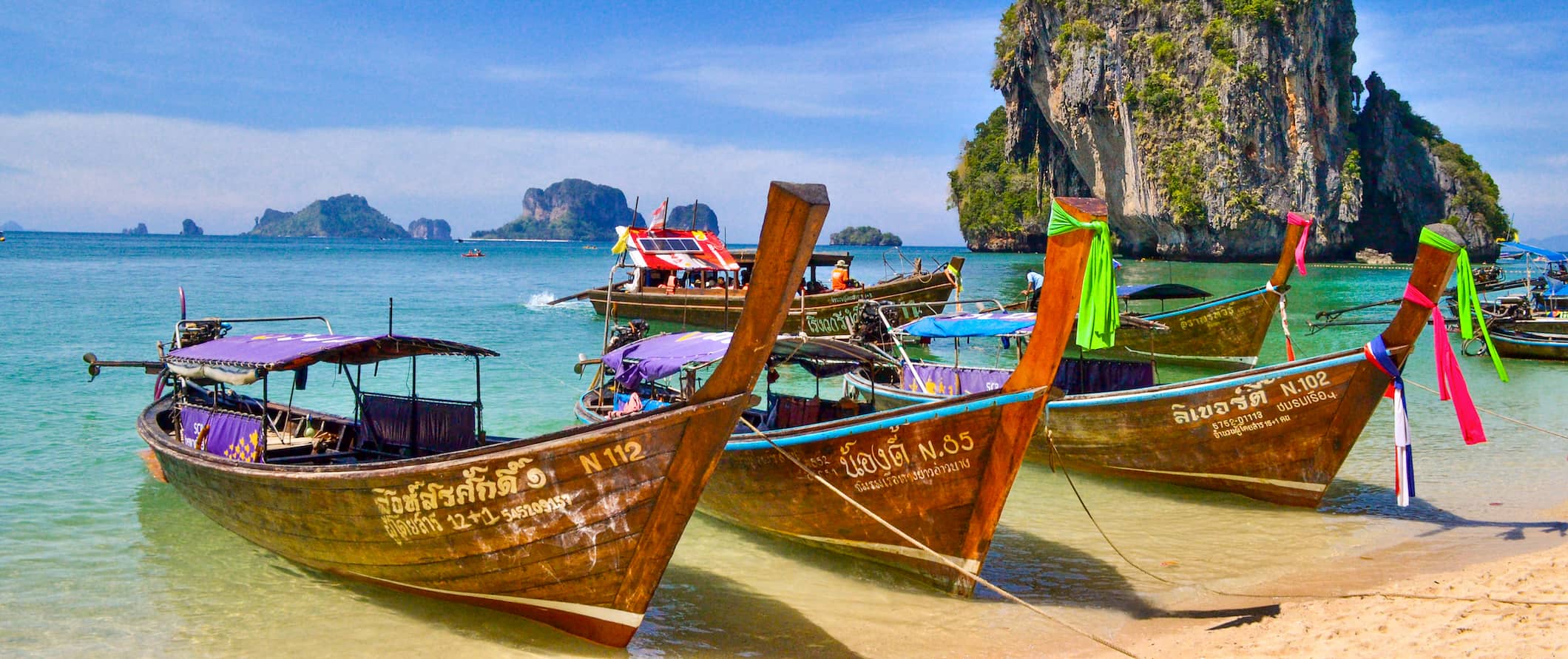
Accommodation – Accommodation in Southeast Asia is really cheap, making it the perfect place to travel if you are on a budget. Hostels are plentiful, as are budget guesthouses and hotels. It’s also very cheap to splash out here if you’re in need of some luxury.
Generally, you can find hostel dorm rooms for as little as $6-8 USD in Cambodia and $3-6 USD in Laos. In Thailand, 4-6-bed dorm rooms are $8-12 USD, while in Vietnam you can expect to pay $5-7 USD. In Indonesia, prices range between $5-10 USD for a 4-6-bed dorm room. Expect to pay at least $15-20 per night for a private room with air conditioning. Free Wi-Fi is standard in most hostels, free breakfast is common, and many hostels even have pools. In more remote areas, hot water isn’t common so make sure to check in advance if that’s an issue for you.
Simple guesthouses or bungalows throughout Southeast Asia generally cost $12-20 USD per night for a basic room with a fan (sometimes air conditioning) and hot water. If you want something nicer that includes a more comfortable bed and a TV, expect to pay $25-35 USD per night.
For backpackers, budgeting around $10 USD per night for accommodation is pretty safe no matter where you go in Southeast Asia. If you’re looking for a higher-end hotel room with more amenities, expect to pay $20-50 USD per night for a room. Anything over that is luxury territory.
Camping is available in certain areas, usually for just a few dollars per night for a basic tent plot without electricity. However, this is about the same price as hostels so it’s not really any cheaper.
Food – While each country’s cuisine varies, overall, Southeast Asian food is aromatic, spicy, and flavorful. Typical spices and herbs include garlic, basil, galangal, cilantro, lemongrass, kaffir lime leaves, chilies, and fish sauce. No matter what region you’re in, you can expect to find a variety of curries, salads, soups, noodle dishes, and stir-fries.
Rice and noodles are central to Southeast Asian food, while the meat is usually pork, chicken, fish, or seafood, which is everywhere on the islands and coastal areas.
While traveling Southeast Asia, street food is the most popular food and cheapest option. On average, these meals cost $1-5 USD. You find these stalls throughout this region lining most streets and every market. They are ubiquitous in the region. In Singapore, street food (from “hawker stands” as they’re known there) costs around $4-5 USD for a meal. Even if you go into small local restaurants, the price doesn’t increase that much.
Food that costs $2 USD at a street stall generally only costs $4-6 USD at a local restaurant. If you went into a restaurant in Thailand, you’d pay around $3-4 USD for a pad Thai that would have cost $1-2 USD on the street.
In Cambodia, street food is around $1-2 USD, while restaurants charge around $3-5 USD for a dish like amok (a coconut milk dish) or luc lac (pepper gravy beef).
Western meals, including burgers, pizza, and sandwiches usually cost around $7-10 USD. But these generally aren’t that great. If you want something that actually tastes as it does back home, expect to spend at least $10-12 USD for your meal.
While cheap, alcohol can take a bite out of your budget if you’re not careful. Those $1-2 USD beers add up! Wine and cocktails are more expensive, generally around $3-5 USD. A cappuccino is typically around $2 USD. Bottled water is plentiful and costs less than $1 USD.
There’s a growing cutting-edge foodie scene in the region and, if you want to splurge, you can do so on some really good meals. Big cities like Bangkok, KL, and Singapore, all have world-class Michelin star restaurants as well some incredible fusion restaurants.
Since dining out is so cheap in the region, there’s no point in grocery shopping unless you’re looking to get some pre-made salads or fruits. Additionally, a general lack of kitchens in most hostels and hotels makes it difficult to cook even if you wanted to. If you do purchase your own groceries, expect to spend around $25 USD per week for basic groceries like local produce, rice, and some meat (while avoiding expensive imported items like cheese and wine).
Backpacking Southeast Asia Suggested Budgets
On a backpacker budget of $45 USD per day, you can stay in hostel dorms, eat out at local markets and street stalls, limit your drinking, do mostly free activities, minimize paid activities, and use public transportation to get around. You’re not going to be able to splash out but you’ll be able to live the typical backpacker experience without really stressing over expenses.
On a mid-range budget of $85 USD per day, you can stay in budget hotels or private hostel rooms, eat more restaurant meals, do more paid activities like cooking classes, take some taxis, and enjoy a few more drinks. You won’t live large, but you won’t be missing out either.
On an upscale budget of $150 USD or more per day, you can stay in nicer hotels with more amenities, eat out as much as you want, do more paid tours including private tours, hire a driver, fly between destinations, and basically do whatever you want. The sky is the limit with this kind of budget!
You can use the chart below to get some idea of how much you need to budget daily, depending on your travel style. Keep in mind these are daily averages — some days you’ll spend more, some days you’ll spend less (you might spend less every day). We just want to give you a general idea of how to make your budget. Prices are in USD.
Southeast Asia Travel Guide: Money-Saving Tips
Backpacking Southeast Asia is cheap. There’s little opportunity to spend a lot of money since everything is already so inexpensive unless you intentionally are trying to splash out on fancy meals and high end hotels. The two reasons why most travelers end up overspending is that they eat a lot of Western food and drink way too much. If you want to save money while traveling in this part of the world, cut down on your drinking and skip the Western food. While country guides have more specific ways to save money, here are some general ways to save money in Southeast Asia:
- Stay with a local – Accommodation is cheap in Southeast Asia but nothing’s cheaper than free! Use Couchsurfing to stay with locals who have extra beds and couches for free. You’ll also meet great people who can show you around and share their insider tips and advice.
- Book tours and day trips as a group – You have more negotiation power when you’re with a group of people buying multiple spots or tickets. Traveling alone? Meet a friend at a hostel and see if they want to join the same tour as you. I’ve met some great friends over the years doing this and highly recommend it.
- Don’t book in advance – Don’t book any tours or activities before you get to your destination. They’ll be much cheaper when you arrive as you’ll be able to negotiate a lower price as you’ll find companies are often offering the same tour and competing. Anything you see online is more expensive than you need to pay!
- Eat on the street – The street food is the best food. The food is the best and cheapest you’ll find. It’s a great way to try new foods and get to chat with locals as well. This is where locals eat so if you want insight into local culture, good food, and savings, eat the street food. Look for where locals are eating to ensure that it’s safe to eat.
- Bargain hard – Nothing is ever at face value here. Bargain with sellers as most of the time, the price they’ve quoted is way higher. There’s a haggling culture in the region so play the game and save some money. It’s important not to convert it in your head to your own currency because it will usually sound cheap even though you might still be getting ripped off. You’ll never get the local price, but you might come close!
- Minimize your drinking – Drinks really add up. Even with cheap drinks, if you’re not aware, you’ll end up spending more money on beer than on food and accommodation. If you want to drink, head to the supermarkets, drink at the hostel, or check out the local happy hours.
- Pack a water bottle – A water bottle with a purifier comes particularly in handy in Southeast Asia since you can’t usually drink the tap water. Save money and thousands of plastic bottles and get a bottle that can purify the tap water for you. My preferred bottle is LifeStraw as it has a built-in filter that ensures your water is always safe and clean.
Where to Stay in Southeast Asia
I’ve been traveling Southeast Asia since 2005 and have stayed in hundreds of places. Here are some of my favorite places to stay in Southeast Asia:
- The Siem Reap Pub Hostel (Siem Reap)
- Onederz Siem Reap (Siem Reap)
- Mad Monkey Siem Reap (Siem Reap)
- Onederz Sihanoukville (Sihanoukville)
- Monkey Republic (Sihanoukville)
- Onederz Phnom Penh (Phnom Penh)
- Sla Boutique Hostel (Phnom Penh)
- The Magic Sponge (Kampot)
- Indigo House Hotel (Luang Prabang)
- Sa Sa Lao (Luang Prabang)
- Sanga Hostel (Pakse)
- Nana Backpackers Hostel (Vang Vieng)
- Dream Home Hostel (Vientiane)
- Traveller Bunker Hostel (Cameron Highlands)
- De’Native Guest House (Cameron Highlands)
- Kitez Hotel & Bunks (Kuala Lumpur)
- Sunshine Bedz Kuala Lumpur (Kuala Lumpur)
- Ryokan Muntri Boutique Hostel (Penang)
- Mad Monkey Hostel (Bangkok)
- D&D Inn (Bangkok)
- Kodchasri B&B (Chiang Mai)
- The Royal Guest House (Chiang Mai)
- Green Leaf (Khao Yai)
- Lonely Beach Resort (Ko Chang)
- The Sanctuary (Koh Phangan)
- Na-Tub Hostel (Koh Phangan)
- Pineapple Guesthouse (Phuket)
- Dream Lodge
- The Pod Capsule Hostel
- The Scarlet
- Under the Coconut Tree Guesthouse (Hoi An)
- Fuse Beachside (Hoi An)
- Pretty Backpackers House (Da Lat)
- Hanoi Old Quarter Hostel (Hanoi)
- Luxury Backpackers Hostel (Hanoi)
- The Hideout (HCMC)
- City Backpackers Hostel (HCMC)
How to Get Around Southeast Asia

Public transportation – Public transportation costs from a few pennies to a few dollars, with Singapore and Malaysia offering the most comprehensive public transportation systems. In Thailand, local buses cost around $0.25 USD per trip, while the Metro and Skytrain in Bangkok cost $0.50-1.50 USD per trip. In Cambodia, a bus ticket in Phnom Penh costs just $0.40 USD per ride.
Major cities generally have subway systems but mostly you’ll be using the bus or shared taxis to get around.
Tuk-tuks (small, shared taxis with no meter) are available around much of the region and require a bit of haggling. They usually have 3-6 seats and generally cost more than public transportation but are faster. To find a reputable driver, ask your accommodation as they usually know someone. Tuk-tuk drivers can often be hired for the day for a discounted rate (this is what a lot of people do to visit the Killing Fields and Angkor Wat in Cambodia, for example).
Taxi – Taxis in the region are generally safe, though it’s not uncommon to have to haggle. Scams to rip you off aren’t uncommon either, so always ask your accommodation to call you a taxi whenever possible so you know you’ll get a reputable company.
In Singapore and Indonesia, taxi drivers do put on the meter. In Bangkok, you can get taxi drivers to use the meter, but if you’re hailing one in a tourist area, he might try to avoid using it. In Vietnam, the meter is sometimes rigged, but if you can get a reputable company like Mai Linh, you won’t have any problems.
Ridesharing – Grab, DiDi, and Gojek are Asia’s answer to Uber. They work the same way: you hire a driver to take you somewhere via the app, and you can pay via the app or in cash. It’s often more affordable than a regular taxi, though drivers are a bit unreliable as the practice is not as widespread here as in other parts of the world.
Just keep in mind that some drivers are driving motorcycles so be sure to double check what kind of vehicle is picking you up if you don’t want to ride on the back of one.
Bus – The easiest and cheapest way to travel around Southeast Asia is by bus. The backpacker trail is so worn that there is a very well-established tourist bus system to take you anywhere. Buses costs vary between $5-25 USD for a 5-6 hour journey. Overnight buses cost $20-35 USD depending on distance (they often have reclining seats so you can get a decent sleep).
You can check ticket prices and book tickets for all the different bus companies across Southeast Asia at 12go.asia.
Train – Train service is limited in the region and not something to really consider when you travel Southeast Asia. You can take a train up and down the coast of Vietnam and there’s some limited scenic rails in Malaysia. Thailand is the only country that has an extensive train system that lets you travel all its regions (and onward to Singapore) from Bangkok.
The train prices in Southeast Asia are determined by distance and class. Night trains with sleeper cars are more expensive than day trains. The night train to Chiang Mai from Bangkok takes twelve hours and costs $27 USD for a sleeper seat. However, that same train during the day is $8-9 USD. In Vietnam, trains run up and down the coast and cost $60 USD from Hanoi to Ho Chi Minh City.
Flying – The cost of flying around Southeast Asia has come down in recent years due to the rise of low-cost airlines. Scoot, Jetstar, and AirAsia are the biggest. Nok Air has a lot of flights within Thailand , and VietJet Air is popular in Vietnam . Lion Air serves Indonesia , but its safety record is really spotty and I personally would not fly them. If you book early, you can save on fares, as most of the airlines offer deeply discounted fare sales all the time, especially Air Asia.
Just make sure that the airport these budget airlines fly into isn’t too far out of your way (transportation from the secondary airport sometimes negates the savings from using the budget airline itself).
Also, keep in mind that you usually must pay to check your baggage on these cheap flights. If you wait to pay for your luggage at the gate, you end up paying almost double. Travel carry-on only to avoid this added cost.
All in all, I only recommend flying if you are pressed for time or find a super cheap deal. Otherwise, stick to the bus.
Hitchhiking – Hitchhiking in Southeast Asia is safe, though popularity of the practice varies by country (it’s more common in Malaysia, but not so much in Cambodia). Dress respectably, smile while making eye contact with drivers, and use a cardboard sign to tell people where you’re headed. Be prepared for long bouts of no pick-ups, especially if you’re traveling through more rural areas. Pack plenty of water and food. Also, make sure the people picking you up understand you’re hitchhiking and not flagging down a taxi.
Hitchwiki is a great resource for hitchhiking tips.
Car rental I don’t recommend renting a car in Southeast Asia. Rental cars are expensive ($40 USD per day or more) and the roads here are in poor shape. I would never drive around the region.
When to Go to Southeast Asia
The best time of year to visit Southeast Asia is from November to April when temperatures are milder (though temperatures vary drastically by region). It may be mild in Thailand in January and hot in Malaysia but in Northern Vietnam, it’s cold! Also, one of the biggest mistakes people make is not taking into account the rainy season. In some cases it won’t make a big difference but definitely does if it’s a beach trip.
In Indonesia, the best time to visit is April to October. Temperatures average 24-30ºC (75-86ºF), and the weather is mostly dry. July to September is the peak holiday season and when you can expect to pay the highest rates. December to February is the rainy season.
In Malaysia, January-March and June-September are the best time to visit, as these months have the lowest average rainfall. It is still hot and humid during this time though. The rainy season is from October to December. Singapore’s climate/weather is much like Malaysia’s.
In Vietnam, the weather varies by region. In Central Vietnam (including Hoi An and Nha Trang), January-May is the best time to visit because it is dry and the temperatures average 21-30°C (70-86°F). June to August is also a decent time to visit. If you want to stick around Hanoi, March to April is great, or October to December (for mildest temperatures). The rainy season is May-September.
Thailand has three seasons: hot, hotter, and hottest. It’s always warm, though the weather is nicest between November and February (which is also peak tourist season). Bangkok is “coolest” and driest during this time (but still averaging a hot 29°C/85°F each day). April and May are the hottest months, and the rainy season is June-October. The gulf islands get pretty rainy from August to December.
The dry season in Cambodia is from November-May and the cool season is from November-February (and when most people visit). Temperatures during this time are still high, but humidity is lower. Laos has the same cool season as Cambodia, with the dry season running from November-April.
In the Philippines, it’s mostly warm all year long with an average daily high of 26°C (80°F). There are rainy and dry seasons and temperatures are hot and dry from March-May and cooler December-February. The best time to visit is between January-April when it’s less humid. Monsoon Season is July-October.
For more information on when to go to places, visit the specific country guides.
How to Stay Safe in Southeast Asia
Southeast Asia is an incredibly safe place to backpack and travel — even if you’re traveling solo and even as a solo female traveler. Violent crime is super, duper rare. Petty theft (including bag snatching) is the most common type of crime in Southeast Asia, especially around popular tourist landmarks. Always keep your valuables out of reach on public transportation and in crowds just to be safe. Never leave your valuables unattended while at the beach and always keep a hold of your purse/bag when out and about as bag snatching is common.
That said, outside touristy areas, theft is really rare. Heck, it’s pretty rare in touristy areas too! But a little vigilance goes a long way and it’s better to be safe than sorry.
There are some common scams around that you’ll want to be aware of, such as the motorbike scam. This involves a bike rental company trying to charge you for damage to the bike that you didn’t cause. To avoid this, always take photos of your rental before you leave so you can protect yourself from baseless claims.
Another common scam involves a tuk-tuk driver taking you somewhere you didn’t want to go in hopes you’ll buy something from the shop/restaurant he dropped you off at (he gets a commission if you do). Simply refuse to buy anything and demand to go back to where you were — or find another driver.
For other common travel scams, read this post about major travel scams to avoid in the region .
Solo female travelers should feel safe here, though it’s generally a good idea to avoid walking around alone at night just to be safe. It’s always a good idea to carry some extra cash to get home in a taxi if you need to. Additionally, always keep an eye on your drink at the bar and never accept drinks from strangers. Be sensible when it comes to dating while traveling and meeting people in public places. As I’m not a woman, please check out some solo female travel blogs to get the best insight.
Overall, the people who get in trouble here tend to be involved with drugs or sex tourism. Avoid those two things and you should be fine. Keep in mind that it’s not always obvious how old someone is or if they’re a sex worker so be mindful when getting involved in romantic interactions. Also, penalties for drug use in this region are stiff so even if you’re here to party, skip the drugs.
Always trust your gut instinct. Make copies of your personal documents, including your passport and ID. Forward your itinerary along to loved ones so they’ll know where you are.
For more in-depth coverage of how to stay safe in Southeast Asia, check out this post that answers some frequently asked questions and concerns.
The most important piece of advice I can offer is to purchase good travel insurance. Travel insurance will protect you against illness, injury, theft, and cancellations. It’s comprehensive protection in case anything goes wrong. I never go on a trip without it as I’ve had to use it many times in the past. You can use the widget below to find the policy right for you:
Southeast Asia Travel Guide: The Best Booking Resources
These are my favorite companies to use when I travel. They consistently have the best deals, offer world-class customer service and great value, and overall, are better than their competitors. They are the companies I use the most and are always the starting point in my search for travel deals.
- Skyscanner – Skyscanner is my favorite flight search engine. They search small websites and budget airlines that larger search sites tend to miss. They are hands down the number one place to start.
- Hostelworld – This is the best hostel accommodation site out there with the largest inventory, best search interface, and widest availability.
- Agoda – Other than Hostelworld, Agoda is the best hotel accommodation site for Asia.
- Booking.com – The best all around booking site that constantly provides the cheapest and lowest rates. They have the widest selection of budget accommodation. In all my tests, they’ve always had the cheapest rates out of all the booking websites.
- Get Your Guide – Get Your Guide is a huge online marketplace for tours and excursions. They have tons of tour options available in cities all around the world, including everything from cooking classes, walking tours, street art lessons, and more!
- SafetyWing – Safety Wing offers convenient and affordable plans tailored to digital nomads and long-term travelers. They have cheap monthly plans, great customer service, and an easy-to-use claims process that makes it perfect for those on the road.
- LifeStraw – My go-to company for reusable water bottles with built-in filters so you can ensure your drinking water is always clean and safe.
- Unbound Merino – They make lightweight, durable, easy-to-clean travel clothing.
Get the In-Depth Budget Guide to Thailand!

My detailed 350+ page guidebook is made for budget travelers like you! It cuts out the fluff found in other guidebooks and gets straight to the practical information you need to travel around Thailand. You’ll find suggested itineraries, budgets, ways to save money, on and off-the-beaten-path things to see and do, non-touristy restaurants, markets, bars, safety tips, and much more! Click here to learn more and get your copy today.
Southeast Asia Travel Guide: Related Articles
Want more info? Check out all the articles I’ve written on Southeast Asia travel and continue planning your trip:

The 4 Best Hostels in Singapore
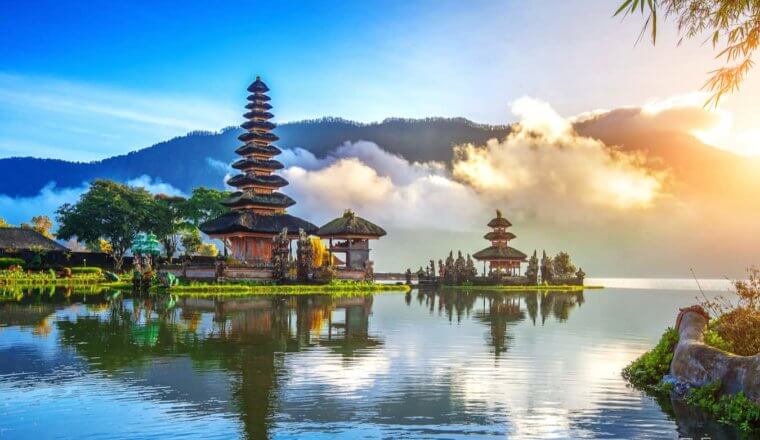
The 6 Best Hostels in Bali
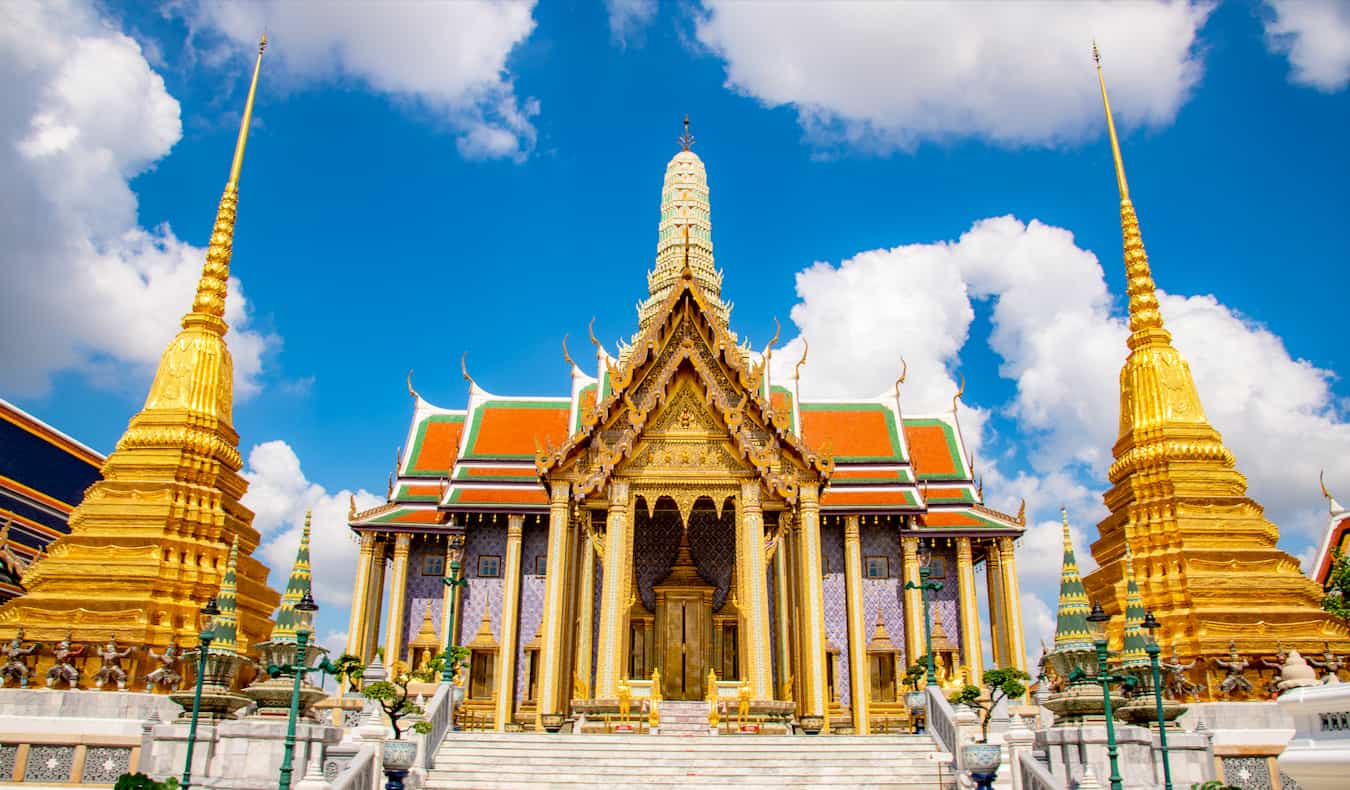
The 22 Best Things to Do in Bangkok
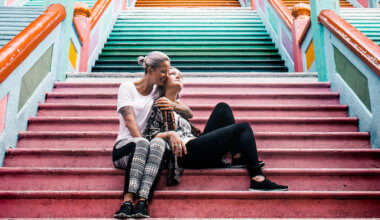
5 LGBTQ Travel Tips for Asia

Is Southeast Asia Safe for Travelers?
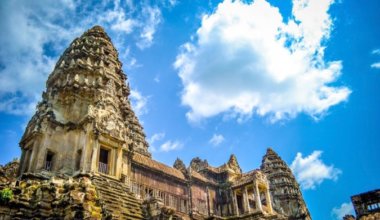
Backpacking Cambodia: 3 Suggested Itineraries for Your Trip
Get your free travel starter kit.
Enter your email and get planning cheatsheets including a step by step checklist, packing list, tips cheat sheet, and more so you can plan like a pro!

- Where To Stay
- Transportation
- Booking Resources
- Related Blogs
- Search Please fill out this field.
- Manage Your Subscription
- Give a Gift Subscription
- Newsletters
- Sweepstakes
- Bus and Train Travel
Buses and trains go almost everywhere in the world, allowing travelers to cover a lot of ground without the hassle of driving or the inflexibility of flights. Whether you want to embark on a romantic long-distance rail journey in Europe or a boozy excursion through Napa Valley’s vineyards, Travel + Leisure has the scoop on the latest routes — and the best bus and train travel ideas.
- Lost Cultures: Living Legacies
- America's Favorite Places
- Attractions
- Better Together
- Destination Videos
- Holiday Travel
- Intelligent Traveler
- Let's Go Together
- Adventure Travel
- All-Inclusive Vacations
- Backpacking Trips
- Beach Vacations
- Budget Travel
- Business Travel
- City Vacations
- Country Trips
- Culinary Vacations
- Destination Weddings
- Disney Vacations
- Fall Vacations
- Family Vacations
- Get Outside
- Global Hot Spots
- Golf Vacations
- Green Travel
- Group Travel
- Honeymoon Destinations
- Island Vacations
- LGBT Travel
- Luxury Travel
- National Parks
- Nature Travel
- New World Wonders
- Romantic Getaways
- Senior Travel
- Solo Travel
- Spa Vacations
- Space Travel + Astronomy
- Spring Vacations
- Summer Vacations
- Volunteer + Charity
- Walking Tours
- Winter Vacations
- Yoga + Wellness
- Weekend Getaways
- Like a Local
- Sustainability
- Latest News
- News Reports
- Documentaries & Shows
- TV Schedule
- CNA938 Live
- Radio Schedule
- Singapore Parliament
- Mental Health
- Interactives
- Entertainment
- Style & Beauty
- Experiences
- Remarkable Living
- Send us a news tip
- Events & Partnerships
- Business Blueprint
- Health Matters
- The Asian Traveller
Trending Topics
Follow our news, recent searches, vehicle entry permits mandatory for singapore vehicles entering malaysia from oct 1, advertisement.
Vehicles will be fitted with a radio frequency identification (RFID) tag that costs RM10 (S$2.90). The tags will be sent to vehicle owners for installation, says Transport Minister Anthony Loke.
This audio is AI-generated.

Rashvinjeet S Bedi
KUALA LUMPUR: Malaysia will require all foreign-registered vehicles entering the country by land from Singapore to use vehicle entry permits (VEPs) from Oct 1, said Malaysian Transport Minister Anthony Loke.
Action will be taken against any foreign motor vehicle without a VEP entering or in Malaysia from that date, he said at a press conference on Tuesday (May 28).
Anyone found guilty of the offence can be fined up to RM2,000 (US$425) or jailed for up to six months.
Vehicles that have been registered will be fitted with a radio frequency identification (RFID) tag that costs RM10.
Mr Loke added the VEP has been implemented since 2019 but has not been enforced. The system was put on hold in 2020 as the government said it was looking at ways to make installation of the RFID tag easier.
Based on current records, Mr Loke said there are about 70,000 Singapore-registered motor vehicles that have activated VEP tags. More than 200,000 motor vehicles have been registered but have not completed the process of installing and activating their VEP tags.
The RFID tags, which uniquely identify each vehicle, are non-transferable. Mr Loke said the tags will be sent to vehicle owners for installation. “If previously, they had to come to Johor Bahru to get it fixed … now it will be sent to their address and they can fix it themselves according to the guidelines provided,” he said.
“The system is ready and the registration commenced in 2019 but we had not enforced it for five years. If we don’t enforce it, the system is not being utilised,” he added.
The VEP will enable the government to track foreign vehicles that enter or leave the country, he said. “When they leave, if they have any summonses, they will have to settle them before they are allowed to leave.”
Currently, all foreign-registered cars entering Malaysia by road via Johor need to pay a levy.
Singapore-registered vehicles are required to pay a road charge of RM20 (S$5.75) for entering via the Woodlands Causeway and Tuas Second Link checkpoints, which are among the busiest in the world.
Motorcycles are excluded from these charges.
During the same press conference, Mr Loke said that the government intends to expand the VEP and Road Charge (RC) system to the Malaysia-Thailand border.
More information about the VEP can be accessed at vep.jpj.gov.my.

CNA Explains: How to get a vehicle entry permit before driving into Malaysia

Johor to trial QR code immigration clearance from Jun 1, starting with Malaysians travelling by bus and motorbike

Hidden gems in Johor Bahru: Unique dining experiences across the Causeway
Related topics, also worth reading, this browser is no longer supported.
We know it's a hassle to switch browsers but we want your experience with CNA to be fast, secure and the best it can possibly be.
To continue, upgrade to a supported browser or, for the finest experience, download the mobile app.
Upgraded but still having issues? Contact us

IMAGES
VIDEO
COMMENTS
There is a shuttle train service connecting Singapore to Malaysia. The journey takes 5 minutes, which is quicker than travelling by road or ferry from Singapore to Malaysia. The arrival point in Malaysia is Johor Bharu Sentral Station from where you can board connecting train services to Kuala Lumpur, the Cameron Highlands and the border with Thailand.
Take the subway from City Hall to Khatib. subway. Fly from Singapore Seletar Apt (XSP) to Sultan Abdul Aziz Shah (SZB) plane. XSP - SZB. $41-170. Bus to Senai, fly to Kuala Lumpur, train • 5h 45m. Take the bus from Queen Street Terminal to JB Custom Out.
StarMart Express operates a bus from Singapore Golden Mile Complex to Terminal Bersepadu Selatan hourly. Tickets cost $7-10 and the journey takes 5h. Star Qistna also services this route every 4 hours. Alternatively, KTM Intercity operates a train from Jb Sentral to Kuala Lumpur twice daily. Tickets cost $2-14 and the journey takes 4h 40m.
The train ride from Singapore to Kuala Lumpur, Penang, southern Thailand & Bangkok is an epic 1,900 km or 1,200 miles, but it's cheap, comfortable & civilised. The whole journey costs as little as $80 or £55. A bargain! This is regular scheduled train travel, not a tour or package.
Among the top choices for traveling from Singapore to Kuala Lumpur is taking a fast and modern train. All high-speed trains running between the cities were designed to offer the passengers everything they might need for a pleasant journey, including several travel classes to choose from, fast travel times (the journey takes about 5 hours), and an extensive timetable with up to 8 daily departures.
2.Travel by Bus — the Cheapest Way. Intercity bus. Travel by bus from Singapore to Kuala Lumpur is a possibly-more-convenient and inexpensive alternative to a flight. It takes about 5-6 hours by bus and it is the most recommended way to travel for the following reasons: Best price: one way costs about USD$11-35 per ticket.
Embarking on a journey from Singapore to Kuala Lumpur by train offers not only an affordable and convenient travel option but also a captivating experience through Malaysia's picturesque landscapes. The three-part voyage takes you from the bustling cityscape of Singapore to the charming allure of Johor Bahru, from there to the heart of Gemas ...
Travel time will take approximately 4 hours for this ride. 4. In order to reach Kuala Lumpur, you will need to purchase a train ticket to KL Sentral from Gemas station. With that, you have completed your journey from Singapore to KL Sentral by train. Now let us get to know more about KL Sentral. This land built across 72-acre is your preferred ...
Singapore to Bangkok (or vice versa) by Eastern & Oriental Express starts at around $3,325 per person in a Pullman or $4,825 in a Stateroom or $7,575 in a Presidential suite, assuming two people travel together and share. For solo travellers, fares start at around $5,140 with sole occupancy of a Pullman compartment.
Singapore and Kuala Lumpur are over 350 kilometers apart, which is a considerable distance. Yet, many backpackers do this route and skip many destinations in between because of the plenty of available direct transportation options. The truth is, the plane is the quickest and easiest way to travel between these two great cities.
1a Travelling from Singapore (Singapore) to Johor Bahru (Malaysia) To travel from Singapore in direction of Malaysia by train, you have to use first the Singapore Metro and then a bus to cross the border. Start from a "MRT Singapore Metro" station in the city center to "Woodlands MRT" station. Journey time about 45 minutes.
StarMart Express operates a bus from Terminal Bersepadu Selatan to Singapore Golden Mile Complex hourly. Tickets cost $7-10 and the journey takes 5h. Two other operators also service this route. Alternatively, KTM Intercity operates a train from Kuala Lumpur to Jb Sentral once daily. Tickets cost $2-14 and the journey takes 4h 41m.
Singapore to Kuala Lumpur. The first train is the KTM Shuttle Tebrau from Woodlands to JB. Beginning your journey in Singapore you should be at Woodlands by 8am so you can clear immigration. [Edit: The JB to Gemas train has since been rescheduled from 9.15 to 8.45, which gives you 10 minutes to connect from the Woodlands-JB shuttle to the JB ...
The complete trip involves 3 steps: Step 1: Singapore to Johor Baru. Step 2: Johor Baru to Gemas. Step 3: Gemas to Kuala Lumpur. The first thing to remember is that you get to pick the day and time of your trip when you purchase a ticket. You can use your ticket only on that specific date and time; there is no flexibility.
The train departs 2 times daily, at 8.05am and 3.20pm respectively. This leg takes 2 hours 35 minutes. That said, if you don't wish to stay the night at Gemas, you can catch the 3.20pm train if you take the 8.30am train from JB Sentral. Walk around and explore KL Sentral, Malaysia's largest transit hub.
Returning from KL to Singapore, the only sane option is to depart KL Sentral at 12.08pm, arrive in Gemas at 2.38pm, board the JB-bound old train at 3.35pm, and finally arrive at JB Sentral at 8.06pm. Otherwise, you'll be stuck in Gemas for hours in the dead of night. Ticket price: RM52 ($17) one way.
Getting the train in Malaysia should be part of any overland travel experience in mainland Southeast Asia. The railway line from the Thailand border to the Singapore border forms part of a journey where you can travel by train from Laos to Singapore.. The most frequent train services in Malaysia are through the more populated west coast states.
KTMB - Malaysia Largest Railway Company. Book all the train tickets online including KTM train, ETS train, Intercity & more though our online ticketing platform. Buy ticket online!
As all KTMB Intercity Trains now terminate at JB Sentral Railway Station in Johor Bahru Malaysia, the only way you can travel from Singapore to Malaysia by train is on one of the KTM Shuttle Tebrau Trains that cross the short distance over the Causeway in just 5 minutes. The popular Keretapi Tanah Melayu Berhad (KTM in short) Shuttle Tebrau service between Singapore and JB is back in ...
22:30. Arrive KL Sentral. 16:00. 00:15. 07:00. Again the train starts at JB Sentral. You have to get from Singapore to JB Sentral first. You can find the full timetable, including arrival and departure times at intermediate stations, on KTMB's website. This shows the stations served by this train:
Getting the train from Kuala Lumpur to Singapore involves three separate train journeys. Here are the trains to book and how to buy the tickets. There used to be a direct train service from Kuala Lumpur to Singpaore. That service was discontinued in 2011, and the rail corridor in Singapore has been turned into a walking path and nature reserve.
The link aims to slash travel time between Malaysia's capital Kuala Lumpur and Singapore from around four hours by road to just 90 minutes by rail. It was originally scheduled to open in 2026.
Tickets cost $7-10 and the journey takes 5h. Three other operators also service this route. Alternatively, KTM Intercity operates a train from Bandar Tasek to Jb Sentral once daily. Tickets cost $2-14 and the journey takes 4h 17m. Airlines. Malaysia Airlines. Singapore Airlines. Firefly.
Thailand is the only country that has an extensive train system that lets you travel all its regions (and onward to Singapore) from Bangkok. The train prices in Southeast Asia are determined by distance and class. Night trains with sleeper cars are more expensive than day trains. The night train to Chiang Mai from Bangkok takes twelve hours and ...
The 'Jungle Train' service, which runs along the spine of Peninsular Malaysia, is the country's last sleeper train as cars and buses drive speed of travel. South China Morning Post Advertisement
From affordable transit options to the latest luxury trains and scenic rail routes, find information and inspiration for bus and train travel around the world.
This short-duration does not affect the overall hours to travel from Singapore to Kuala Lumpur by bus. 6. Once the buses reach Malaysia, get your passport stamped at the Singapore immigration custom counter. Travelling by bus from Singapore to KL is convenient, affordable, and enjoyable for exploring Malaysia.
What are the Lyon to Bruges train times and schedule? If you're travelling on a weekday, you'll find the earliest train to Bruges leaving Lyon at around 05:50 and the last train leaving at around 22:04. At weekends, the first train of the day leaves Lyon at around 05:50, with the final departure at 20:30.
6 alternative options. Ferry, bus • 8h 7m. $44-52. Ferry, subway to Singapore Changi, fly to Kuala Lumpur, train, subway • 5h 22m. SIN - KUL. $53-148. Travel, ferry, subway to Singapore Seletar Apt, fly to Sultan Abdul Aziz Shah • 5h 34m. XSP - SZB. Travel, ferry, subway to Singapore Changi, fly to Penang • 5h 58m.
Currently, all foreign-registered cars entering Malaysia by road via Johor need to pay a levy. Singapore-registered vehicles are required to pay a road charge of RM20 (S$5.75) for entering via the ...